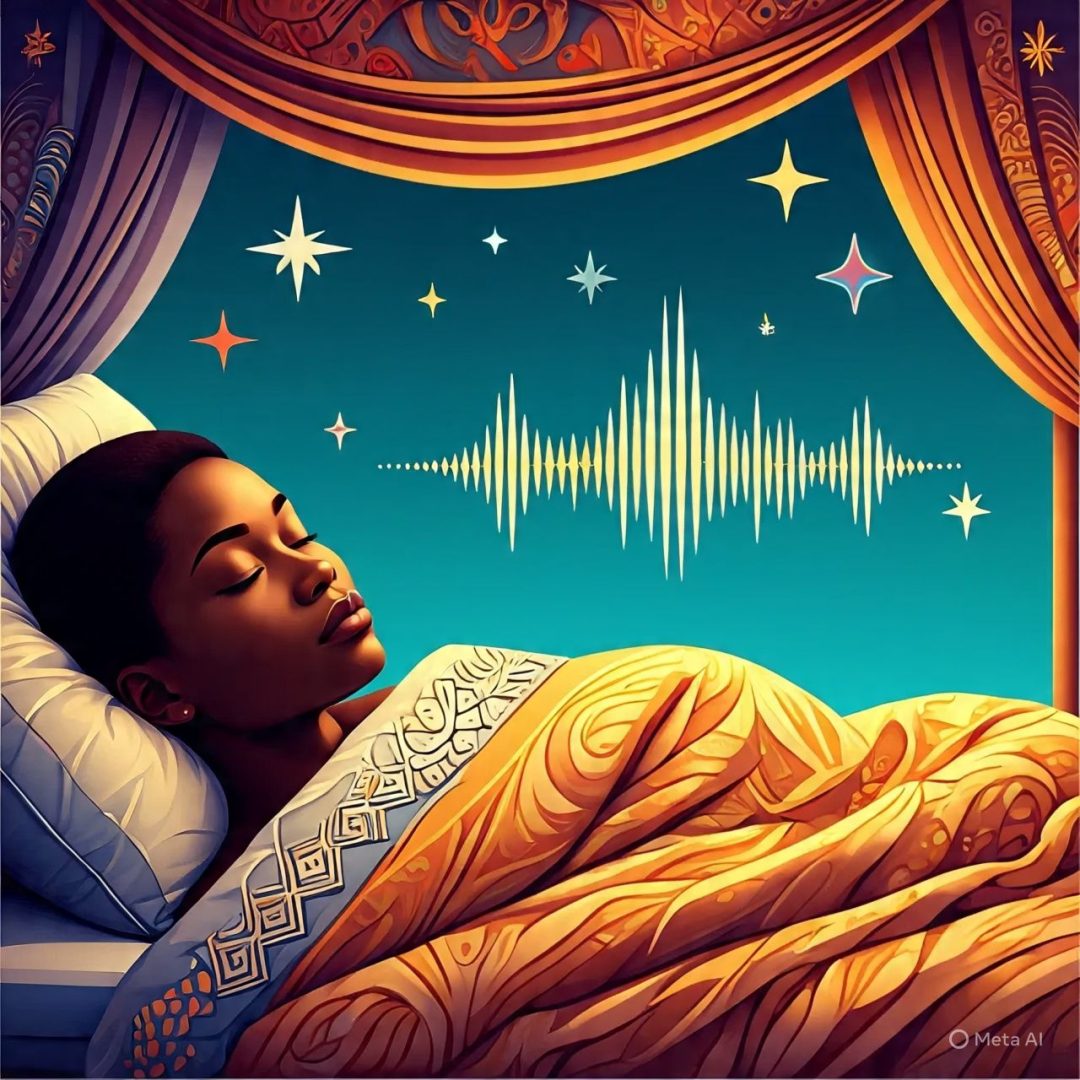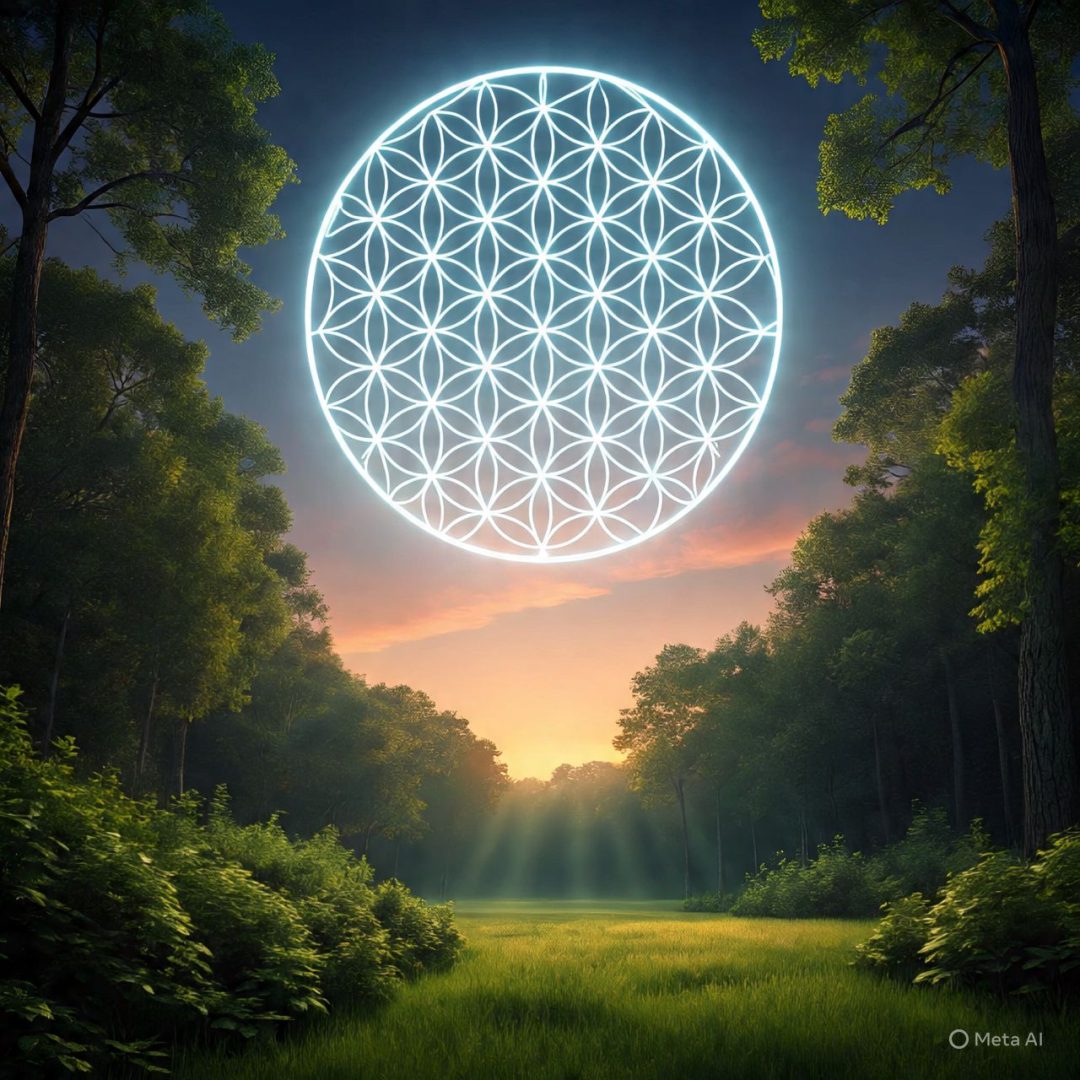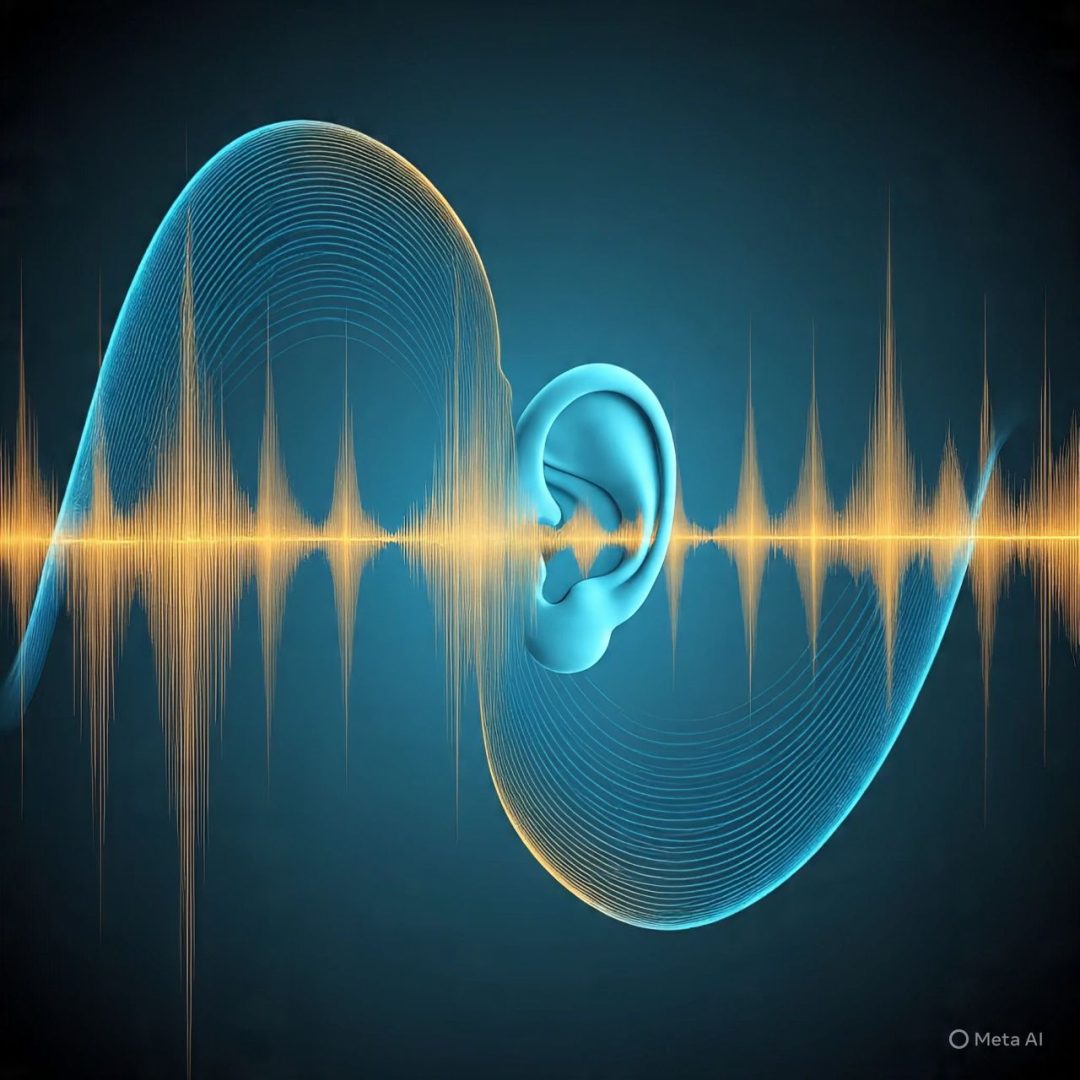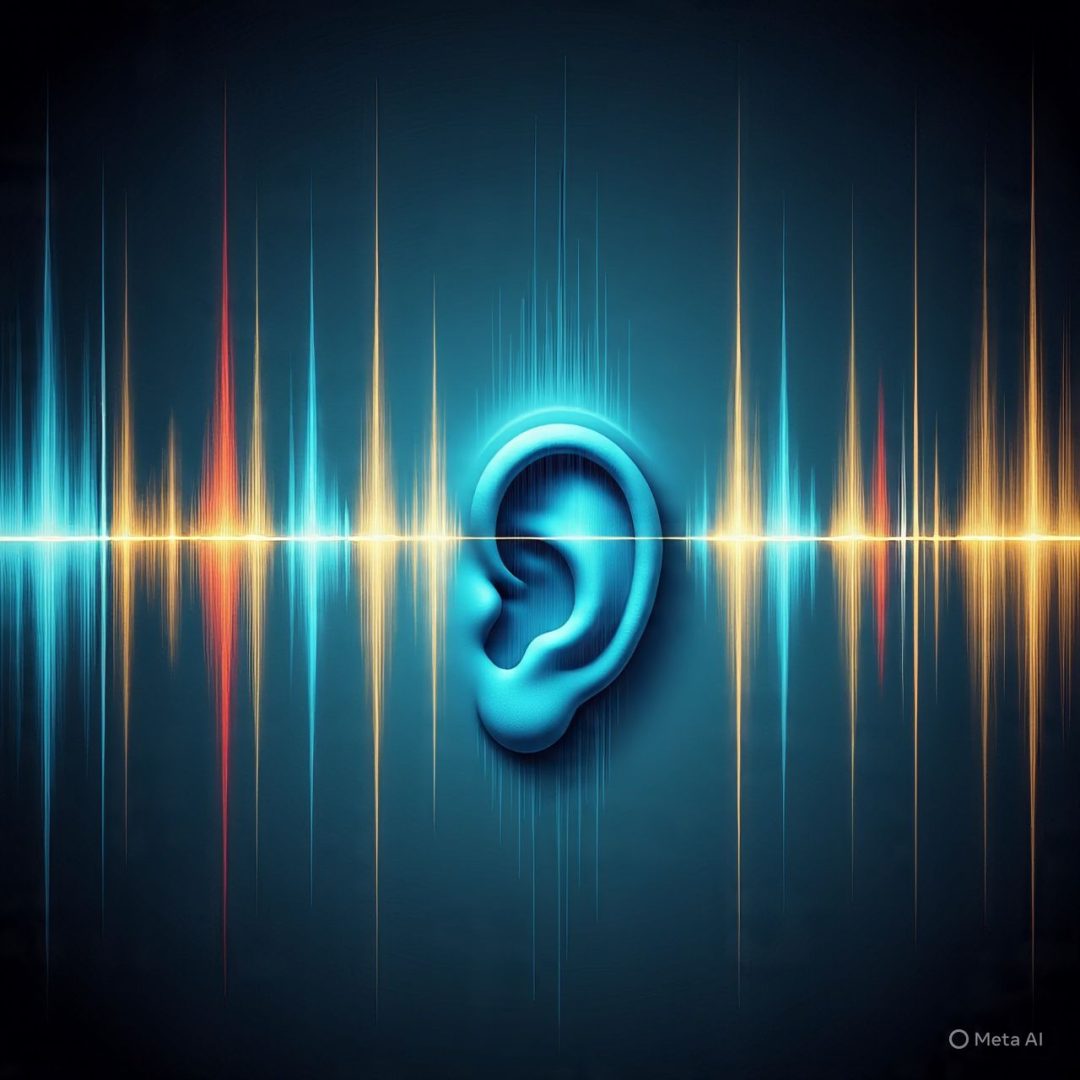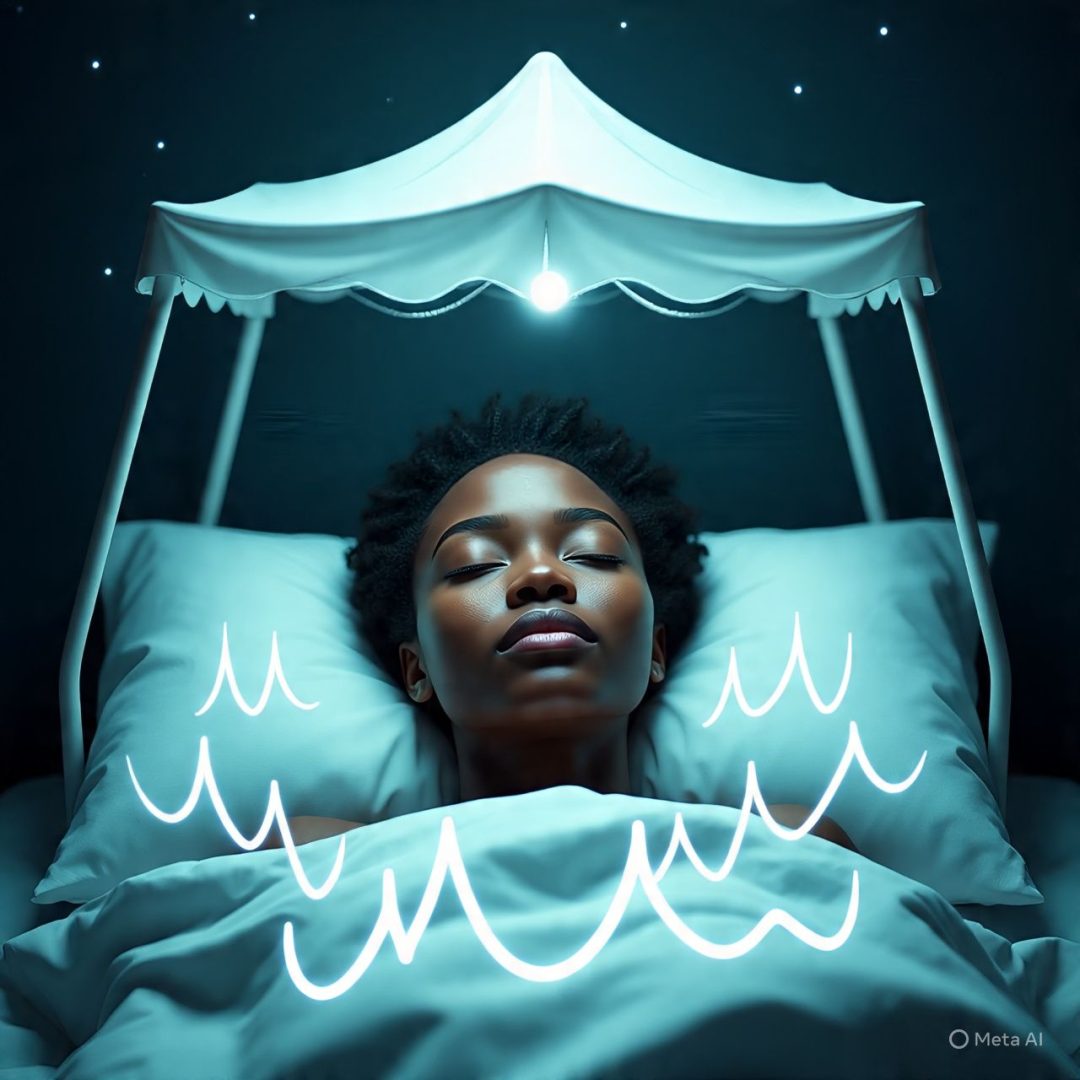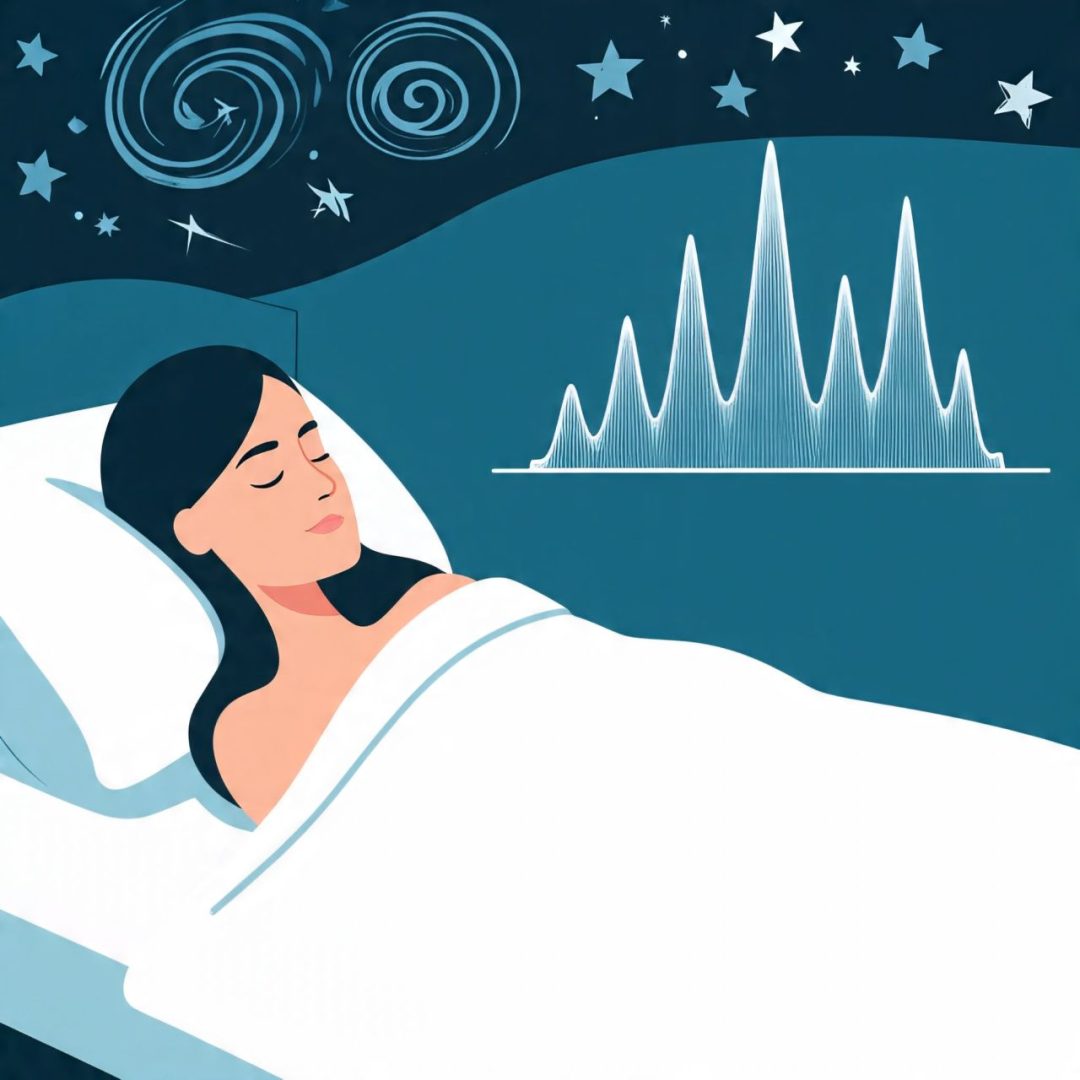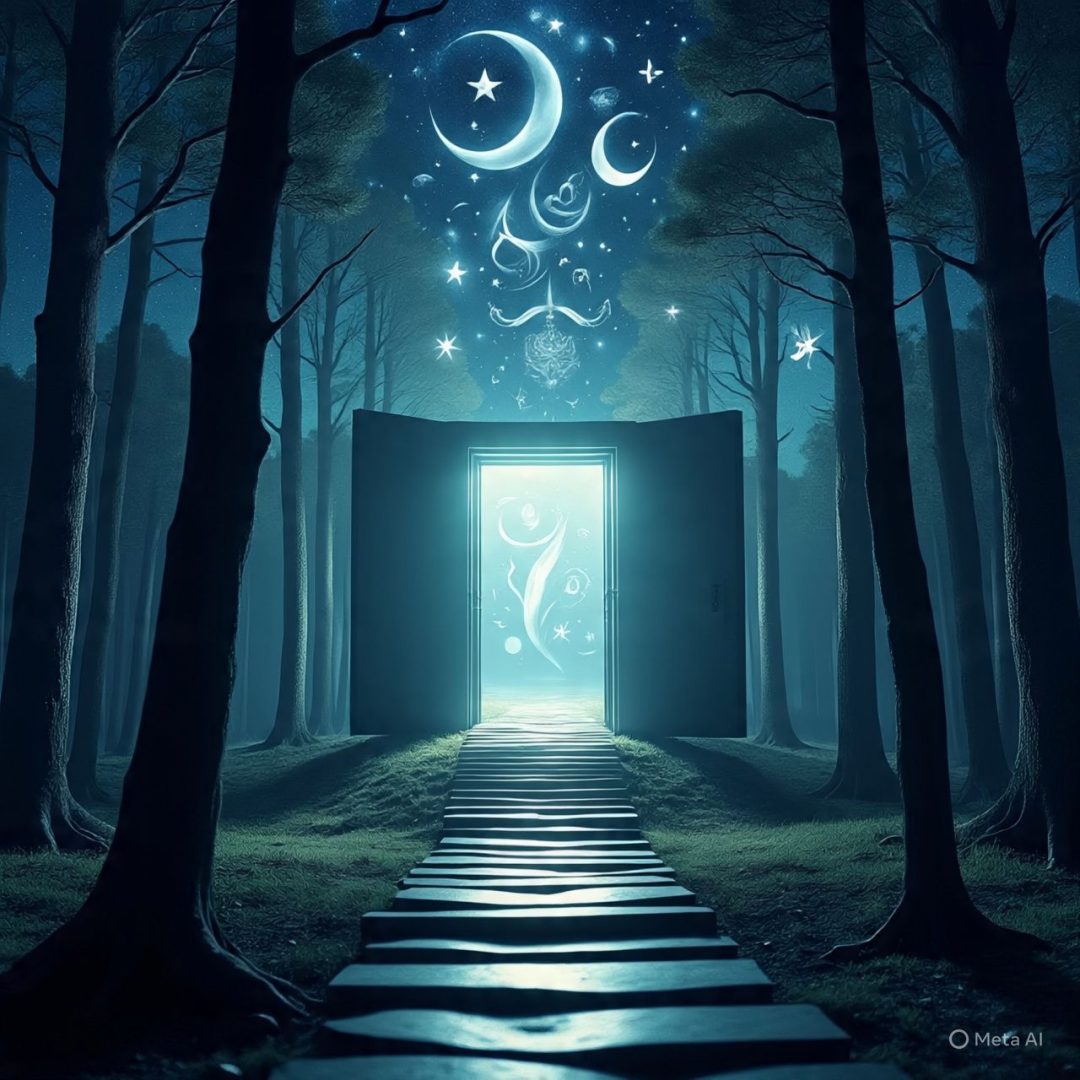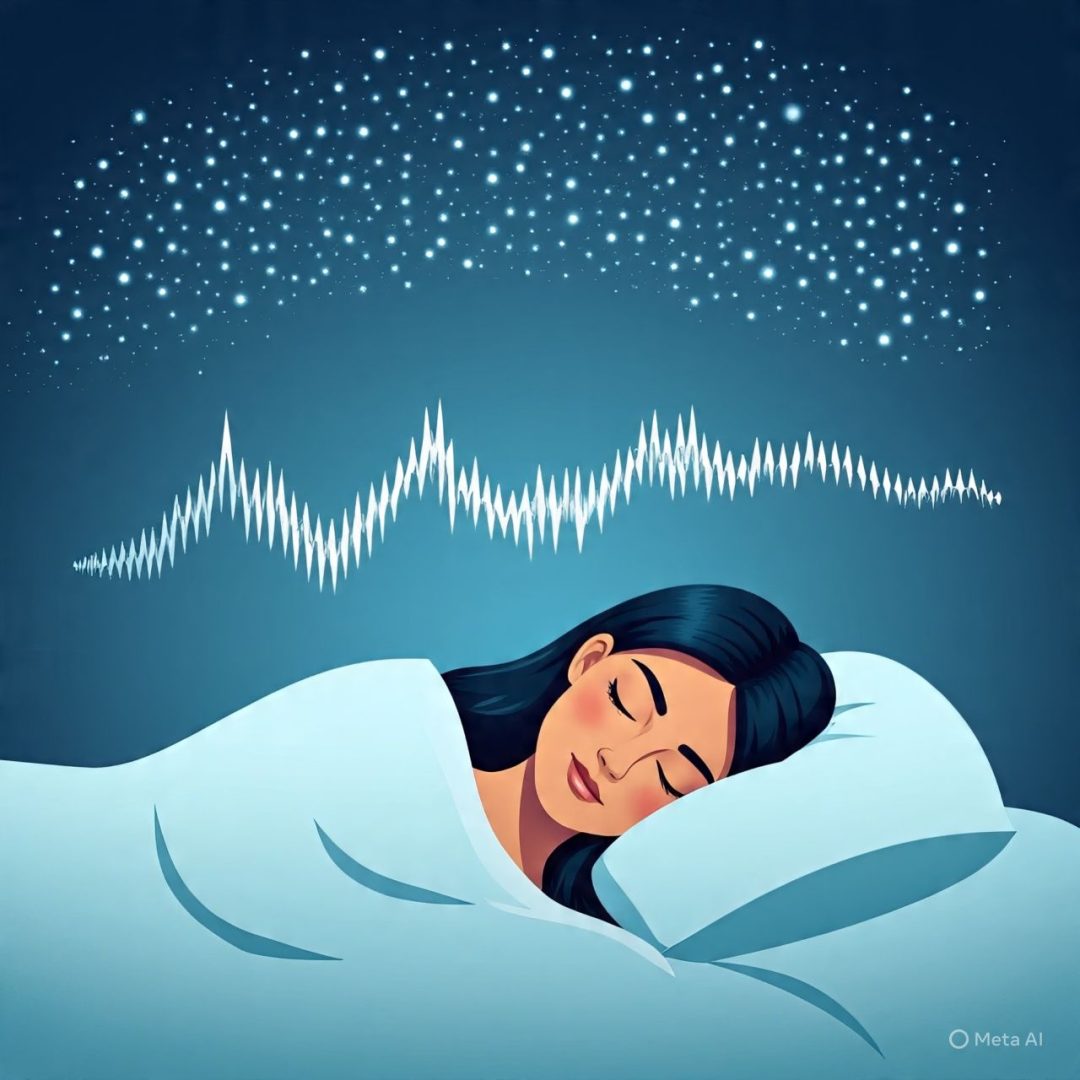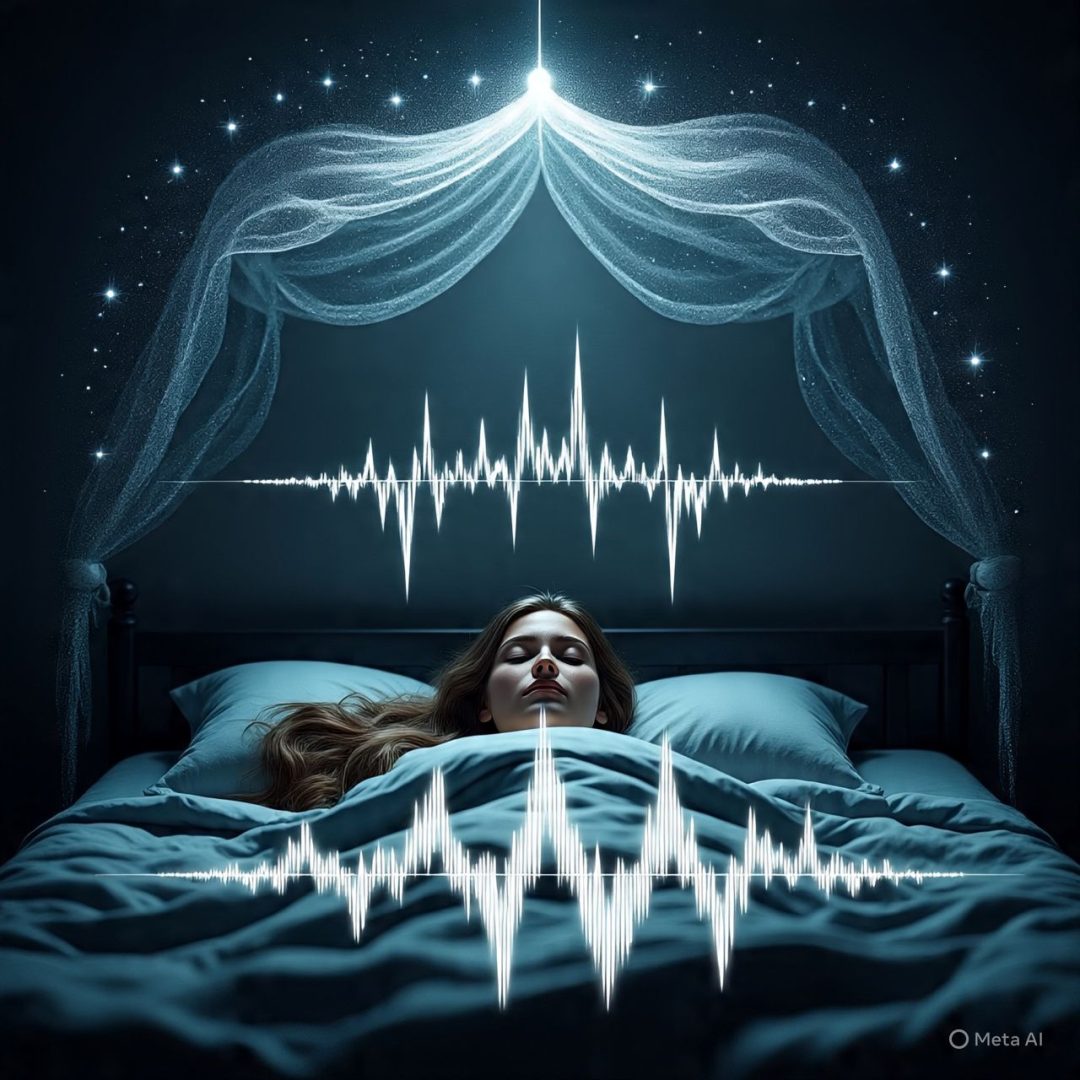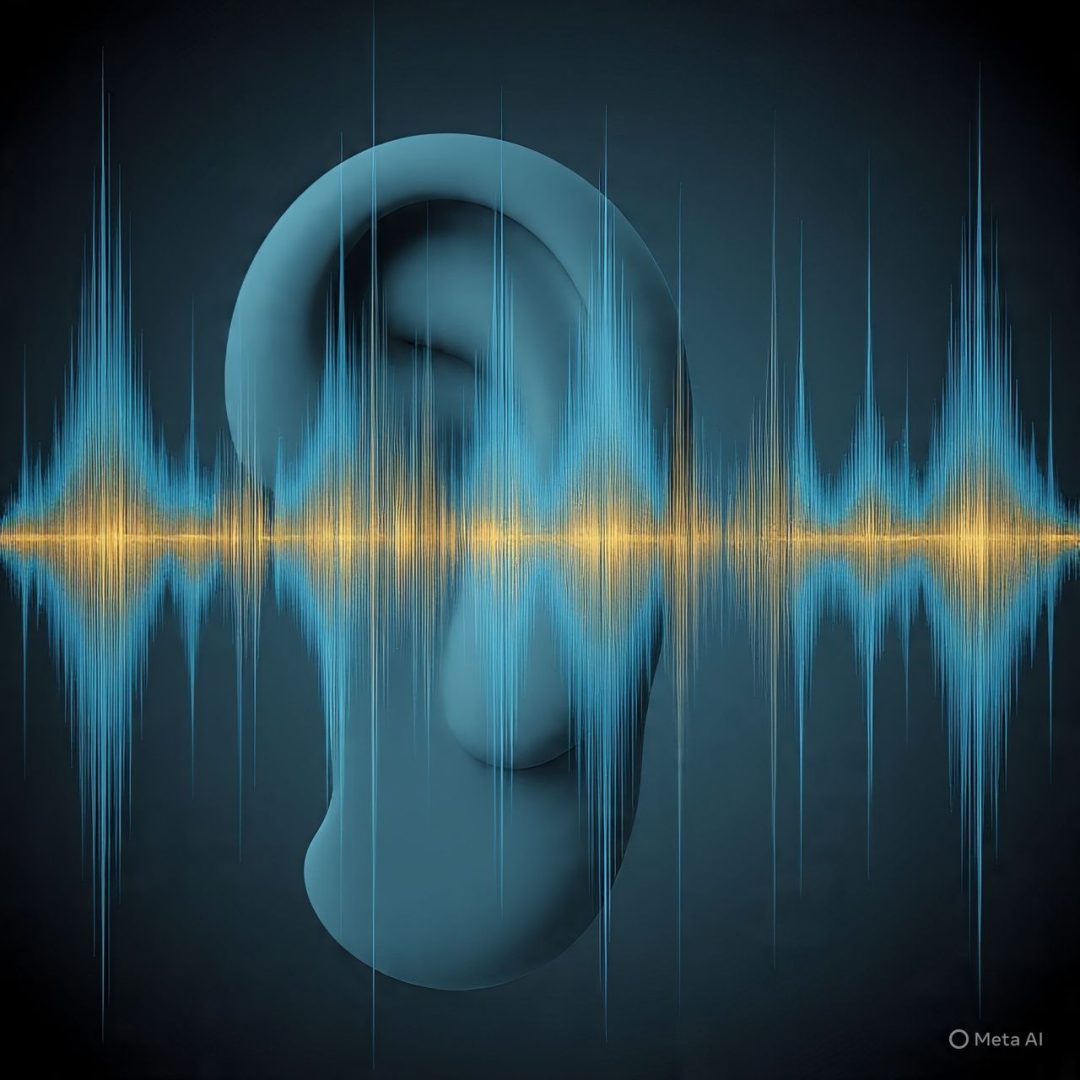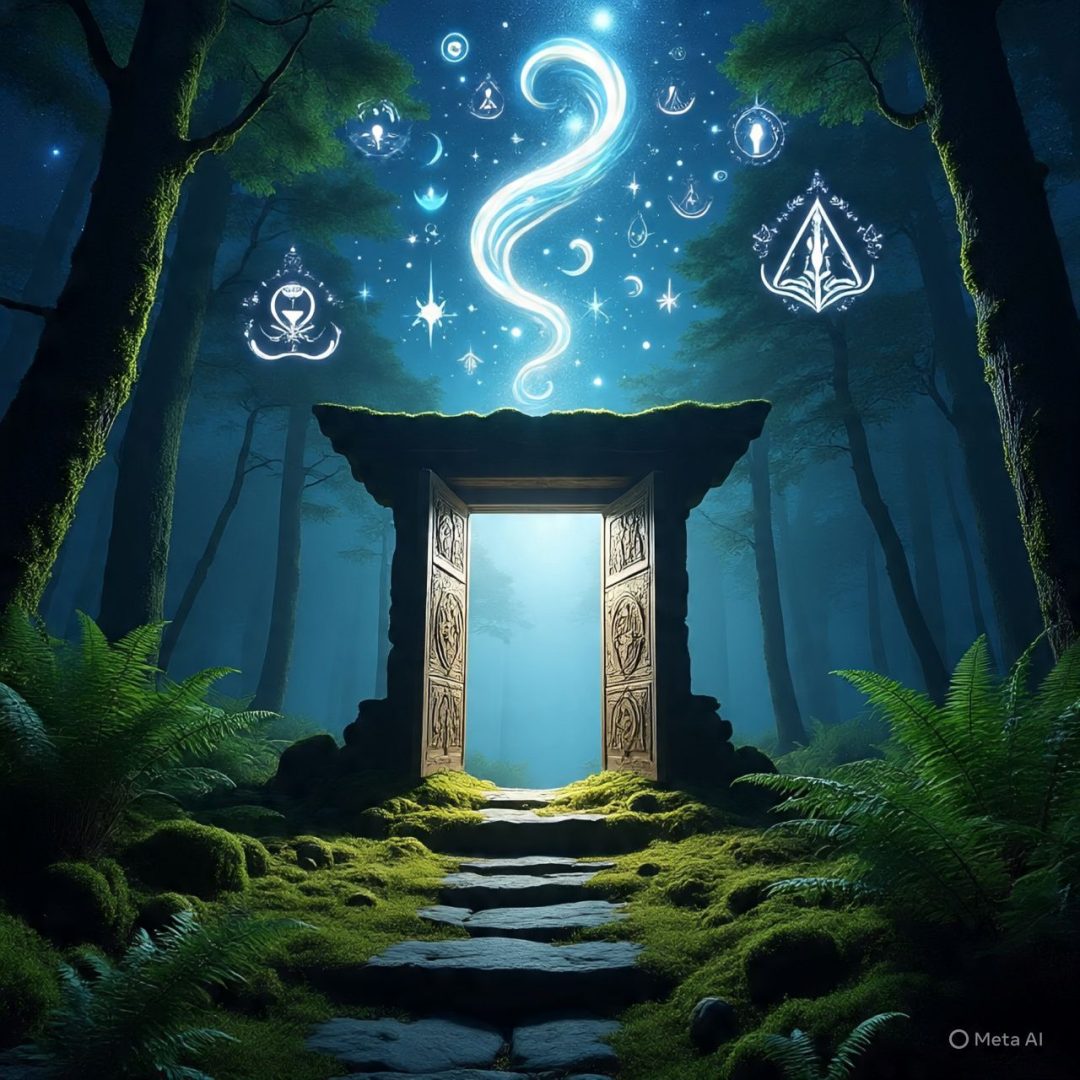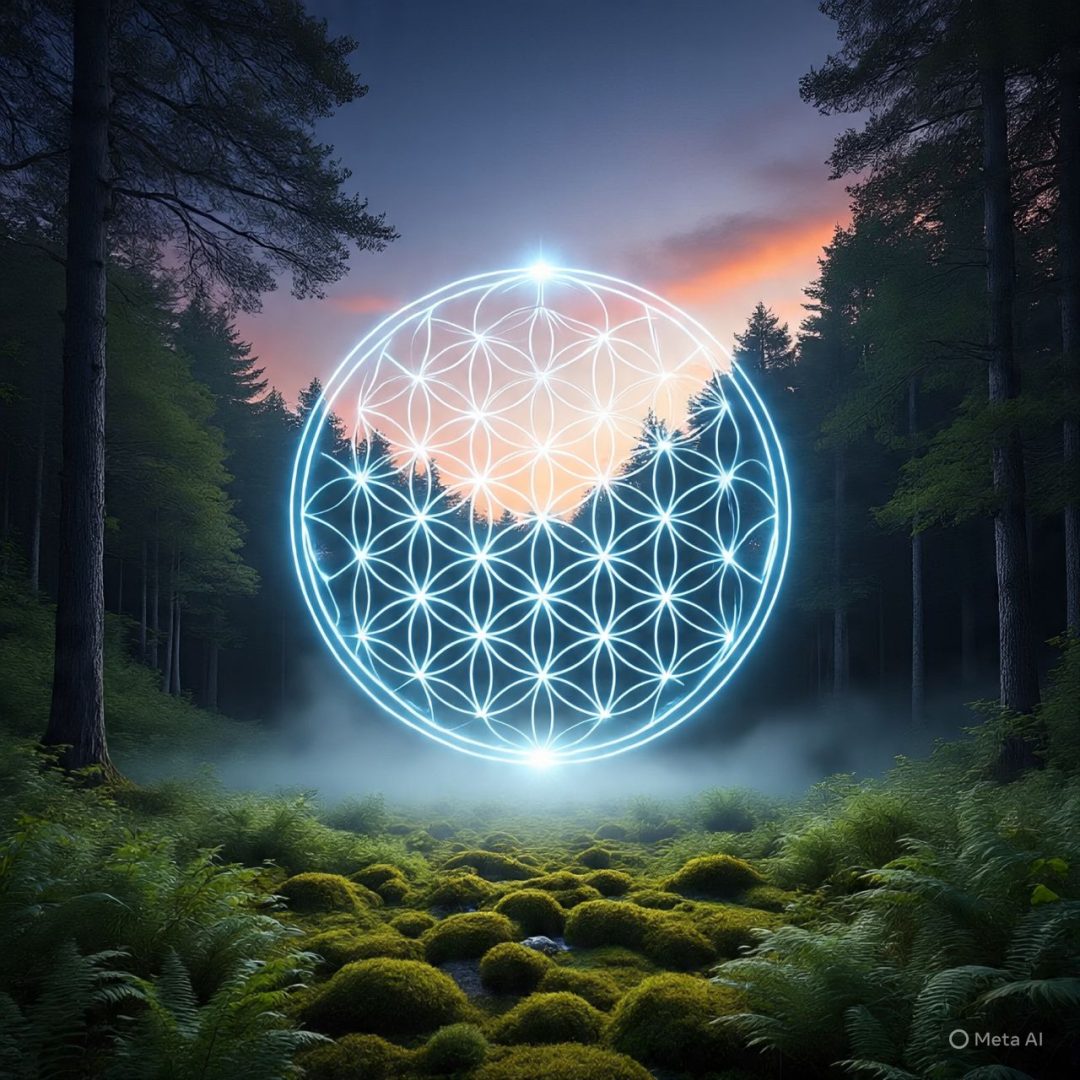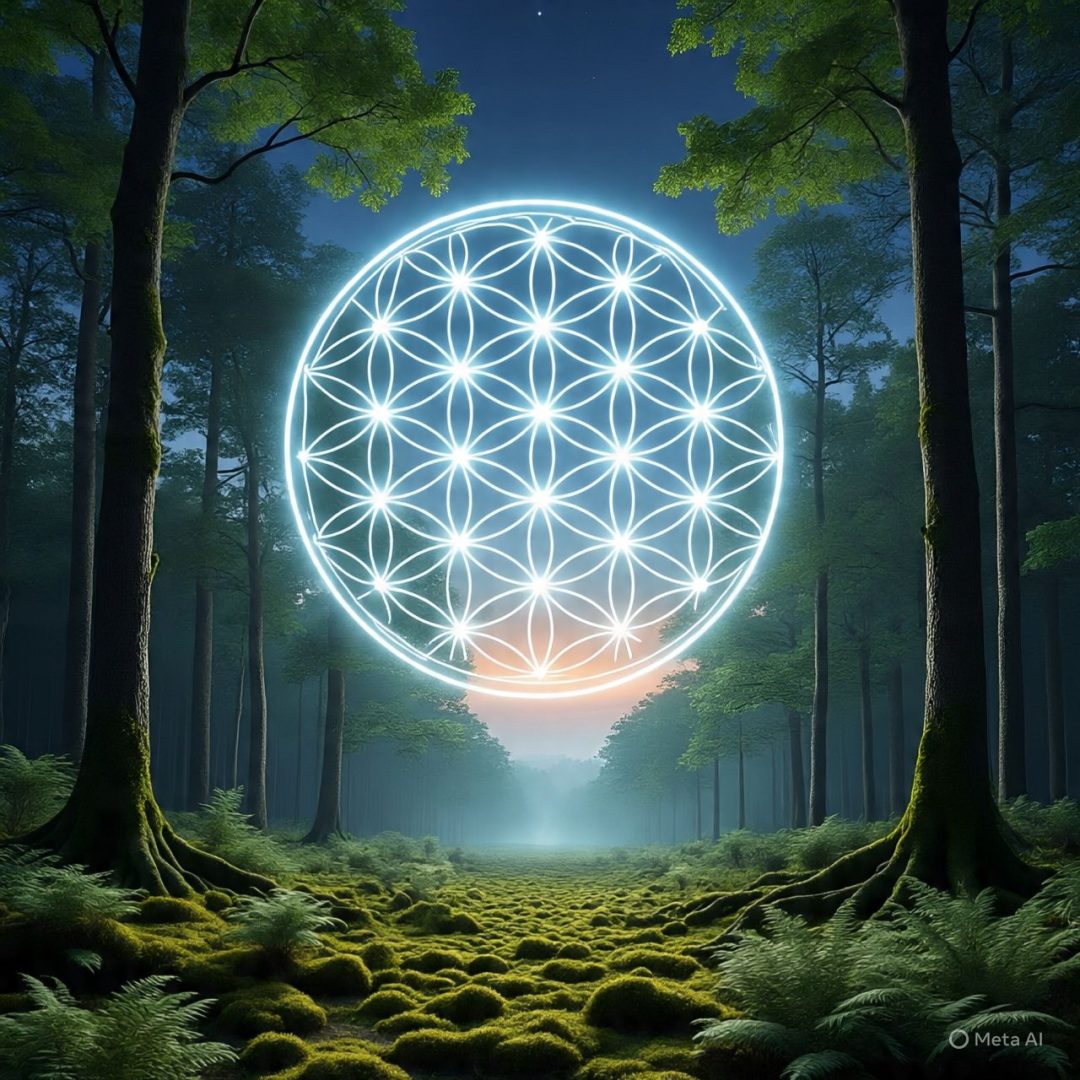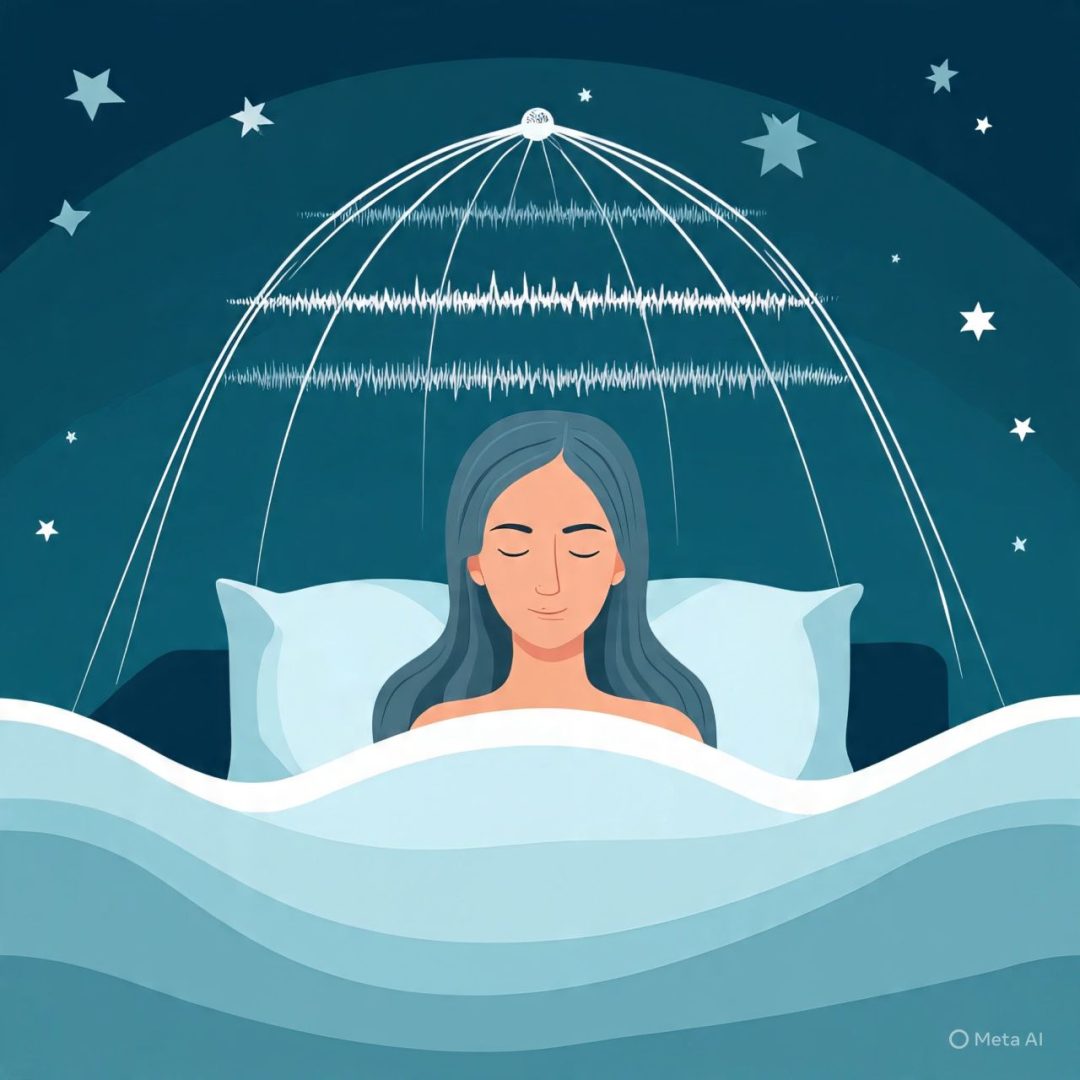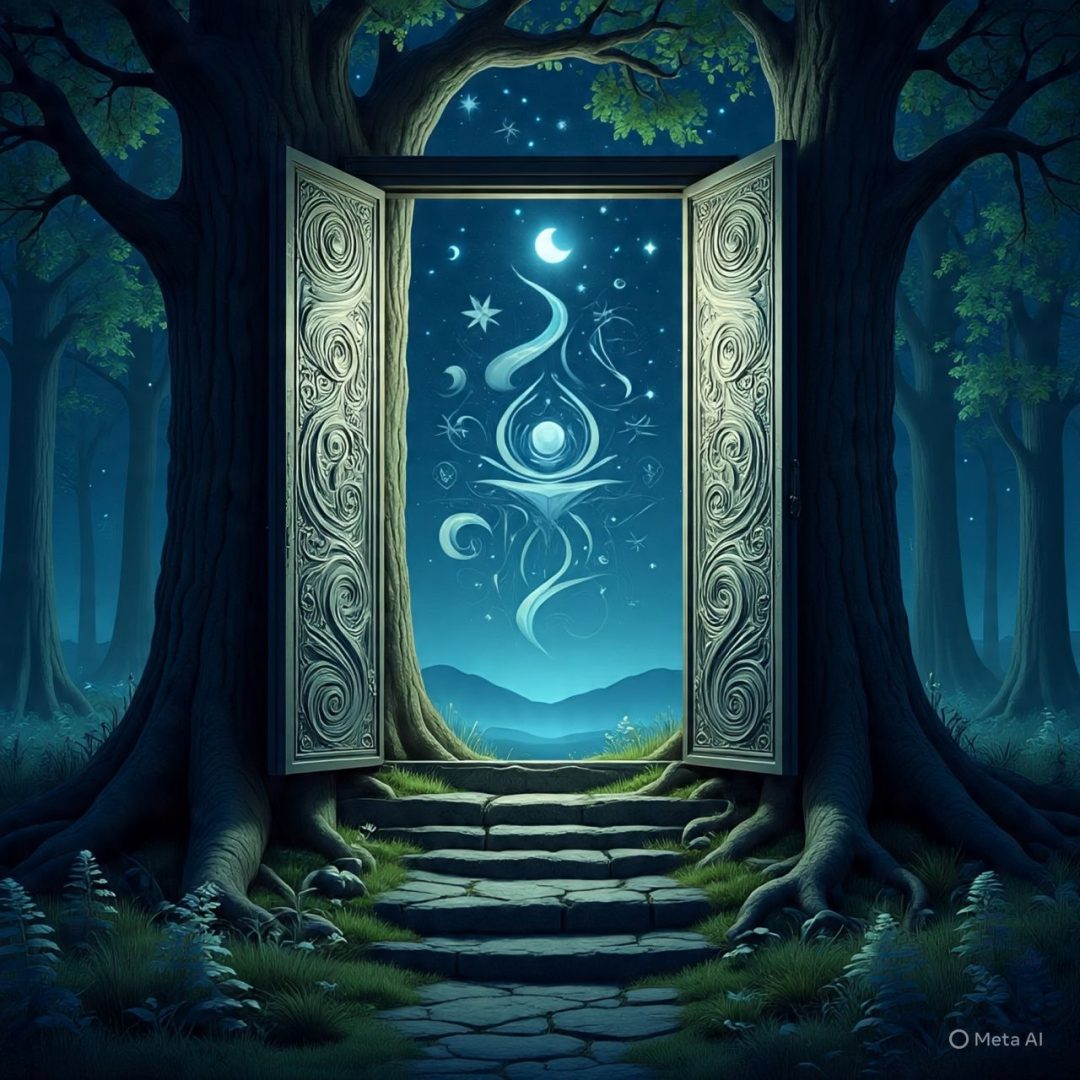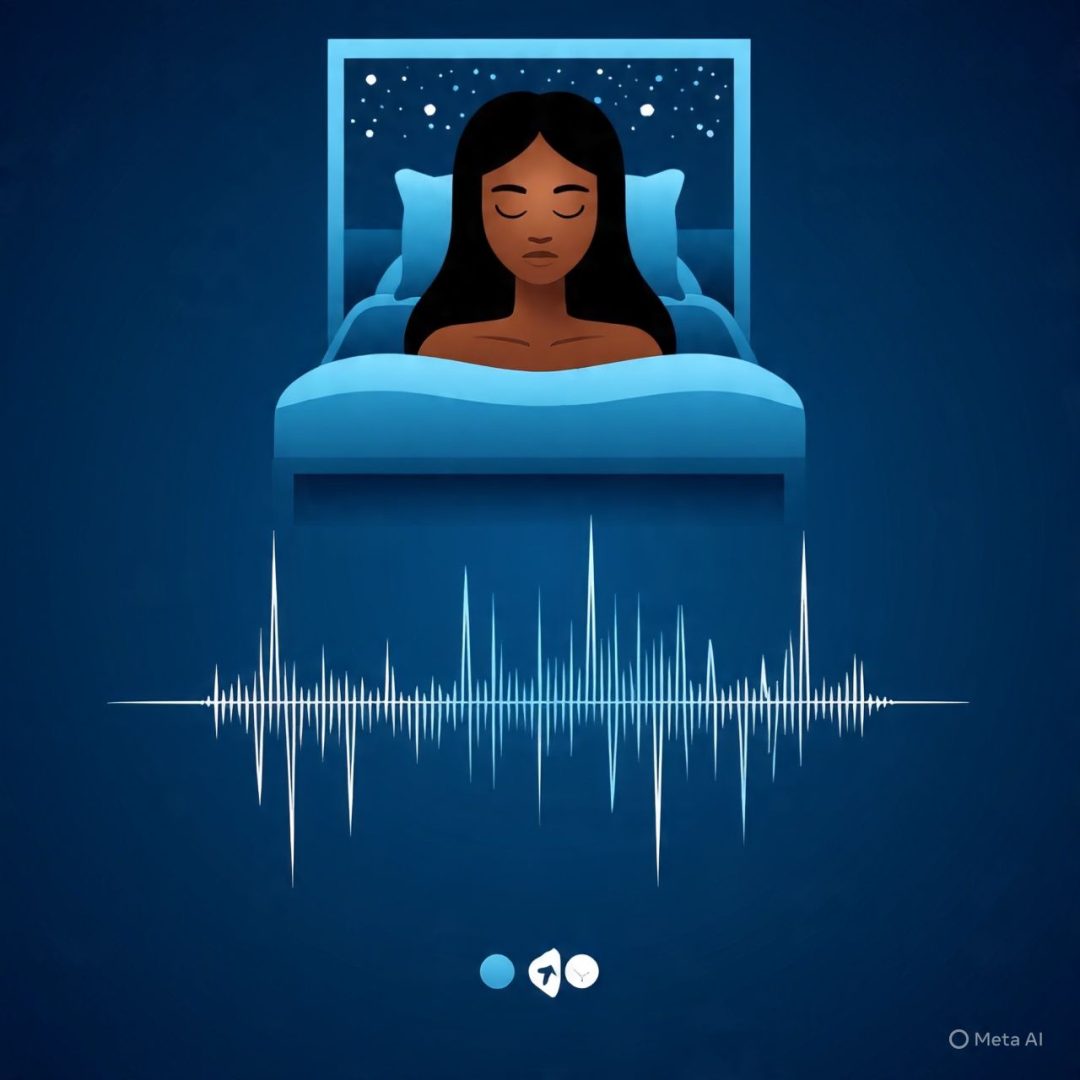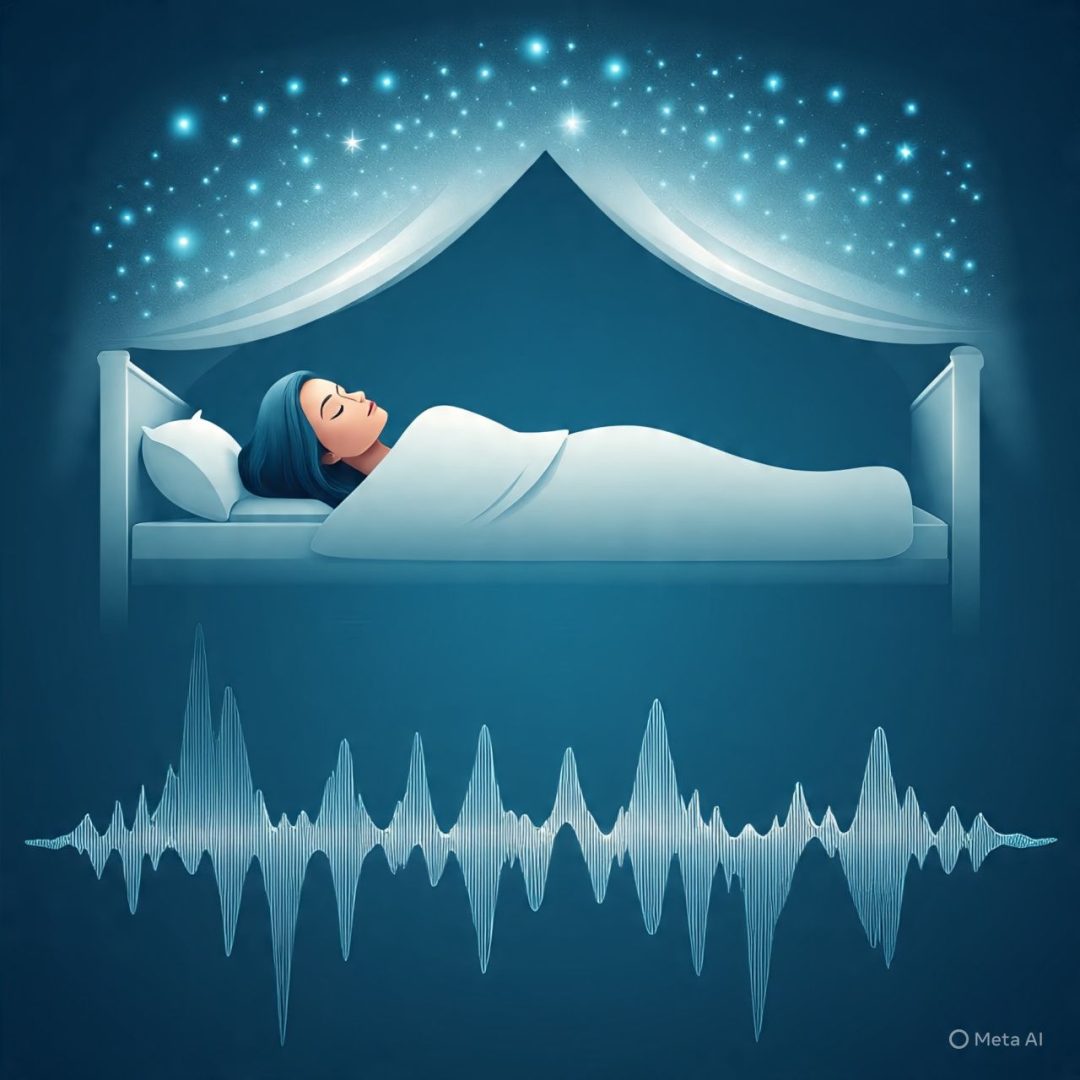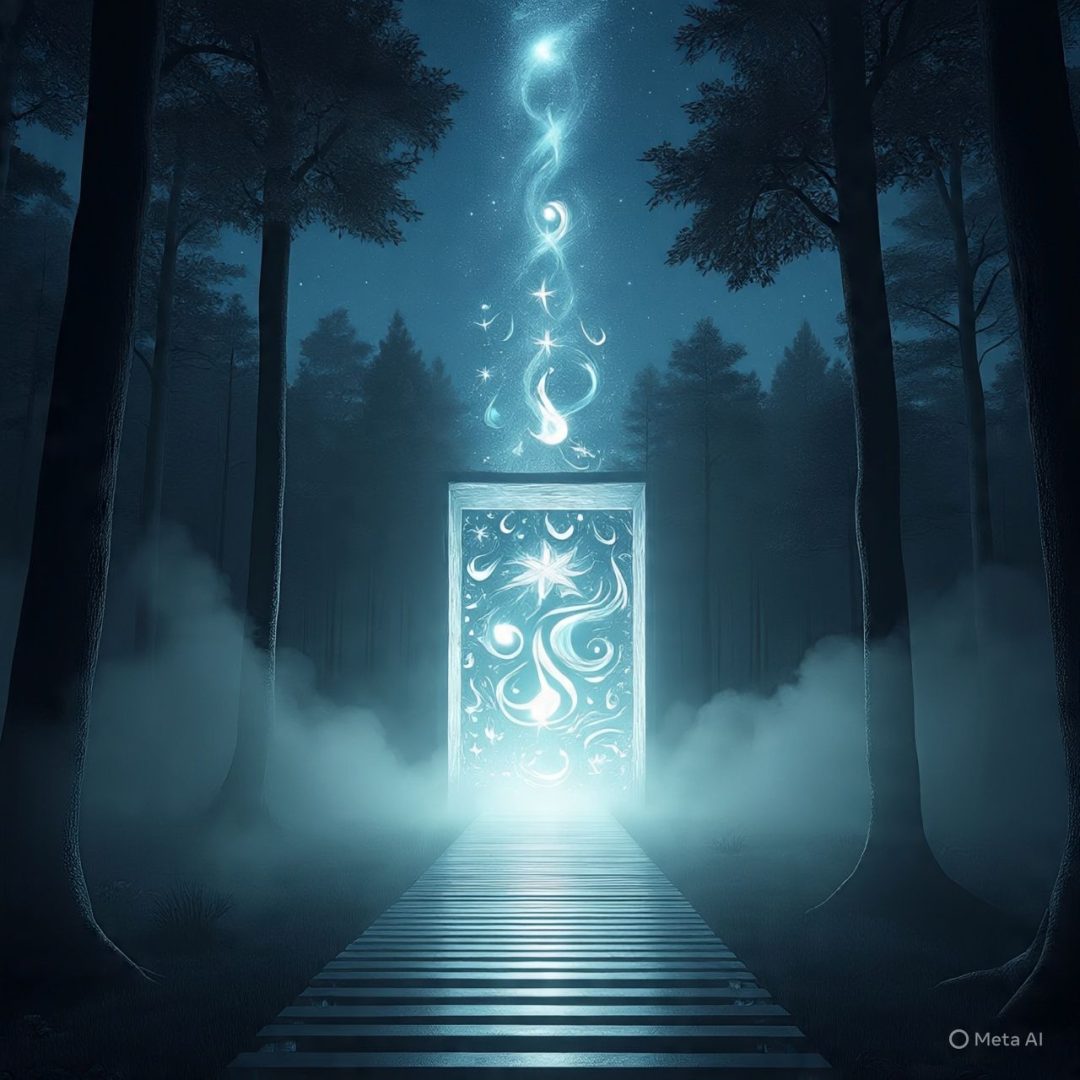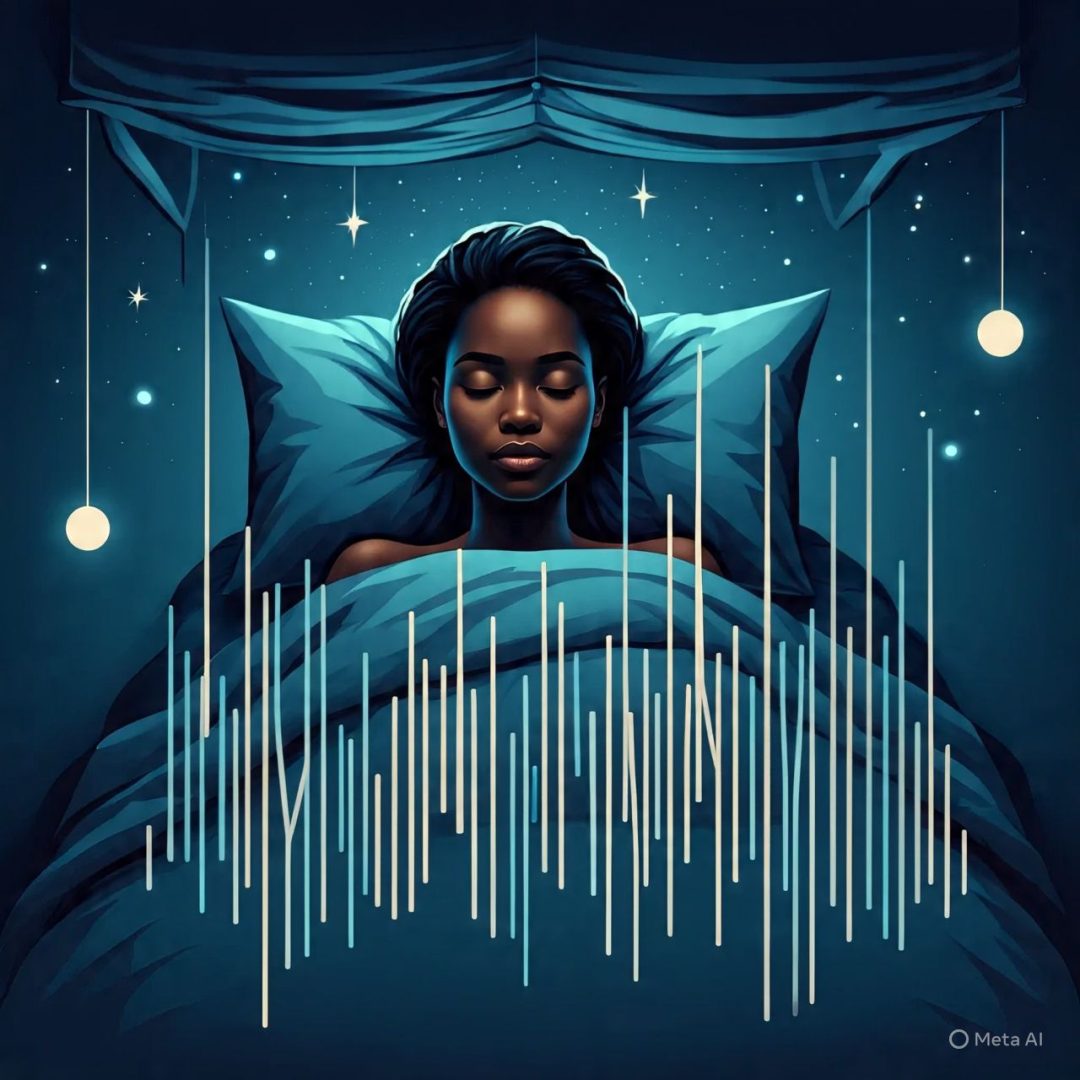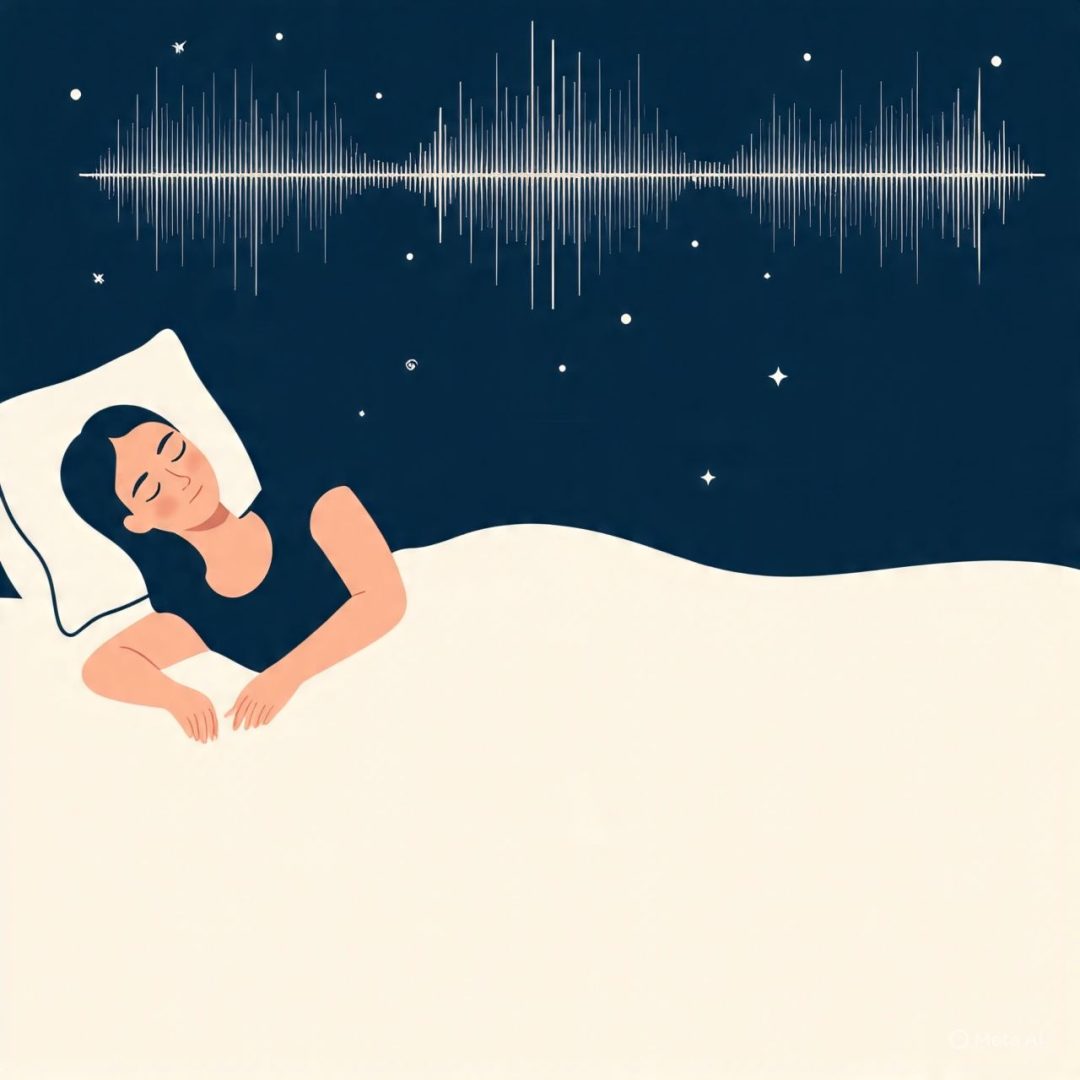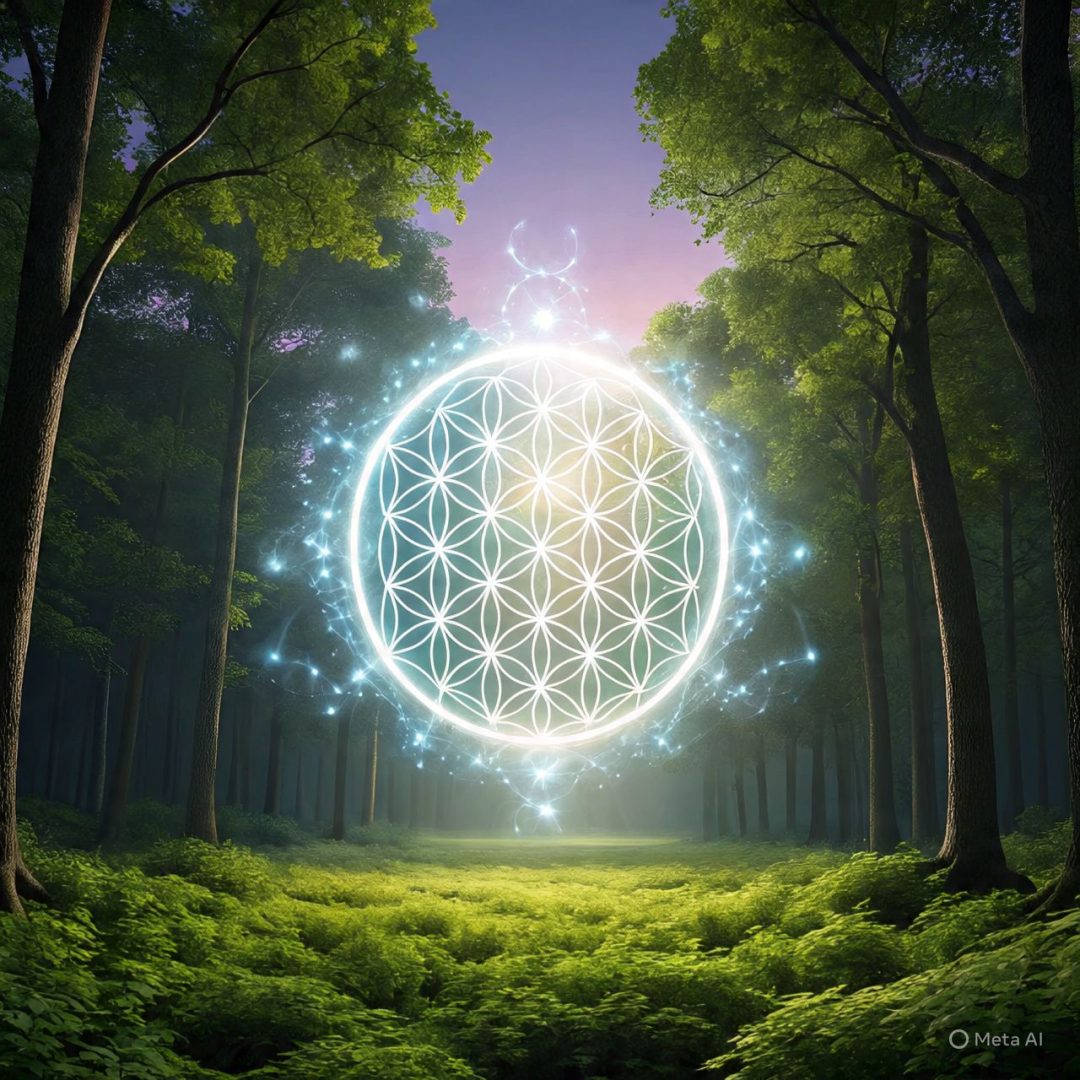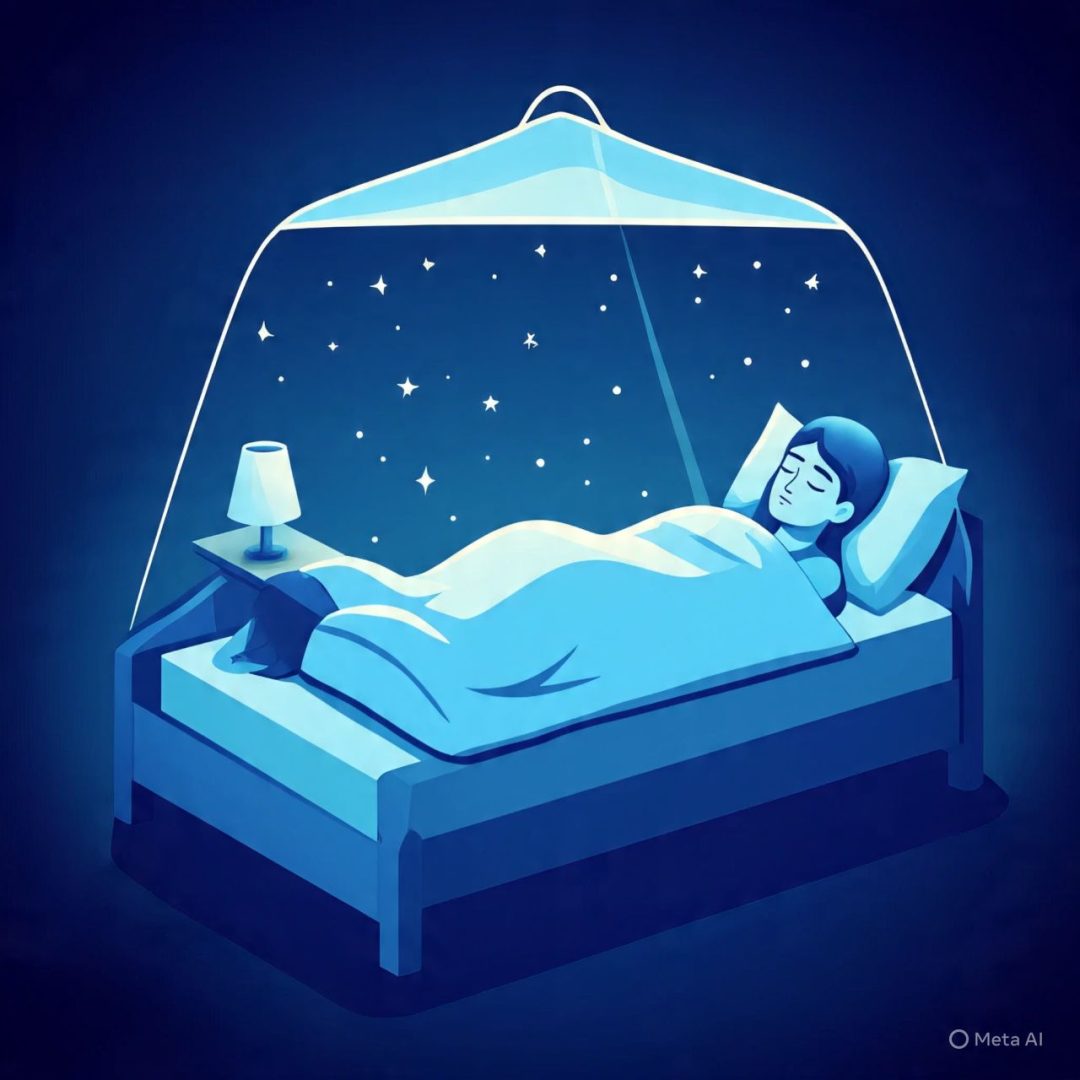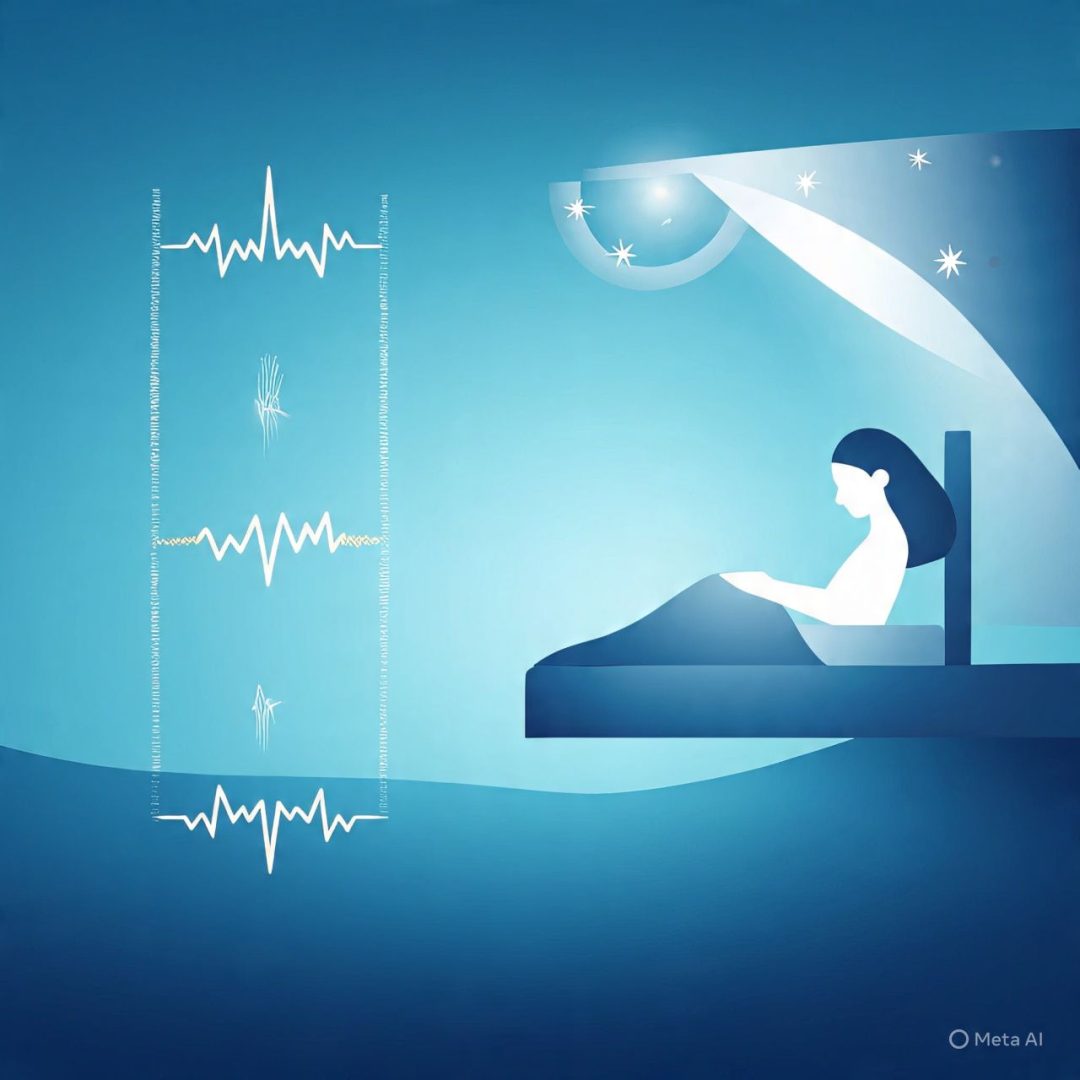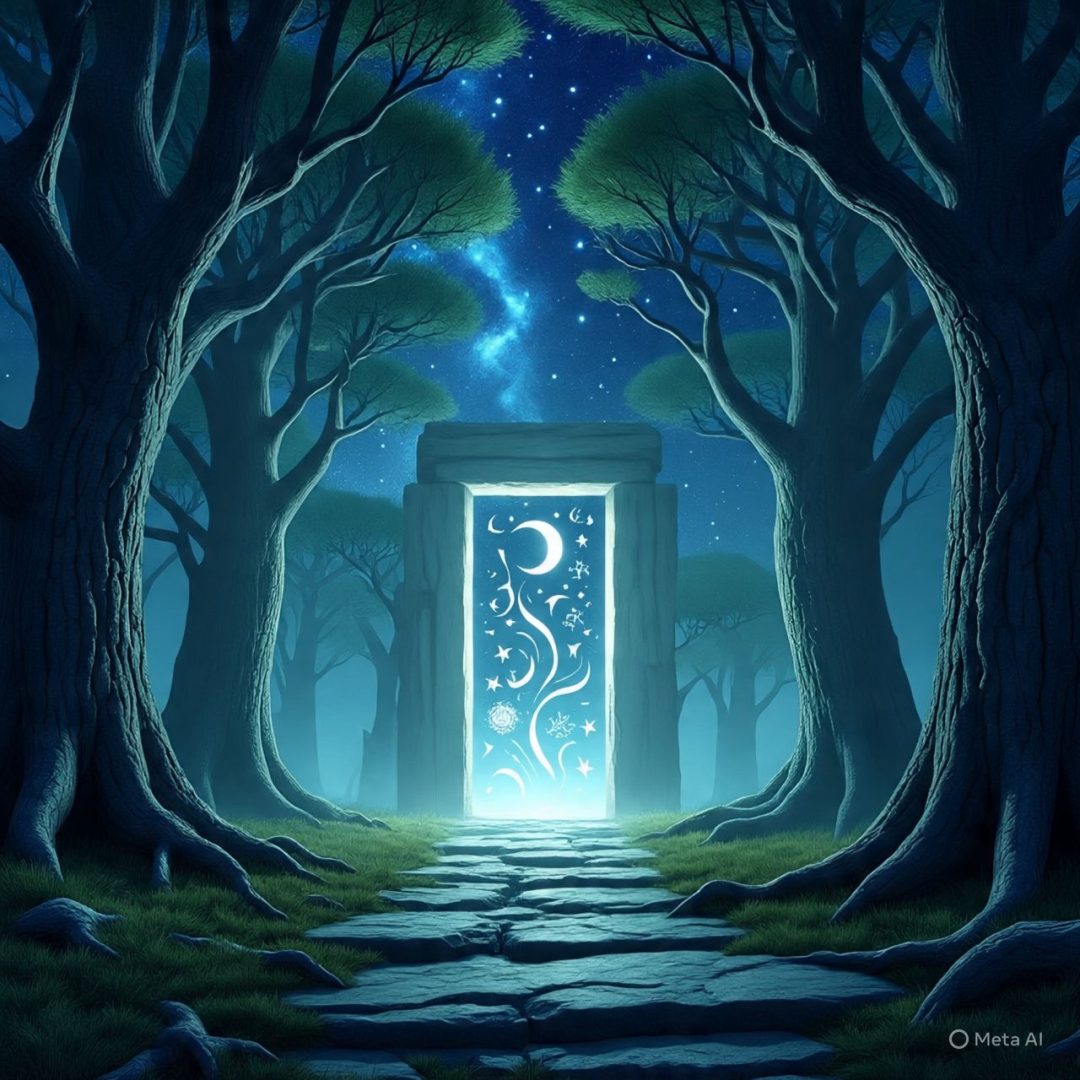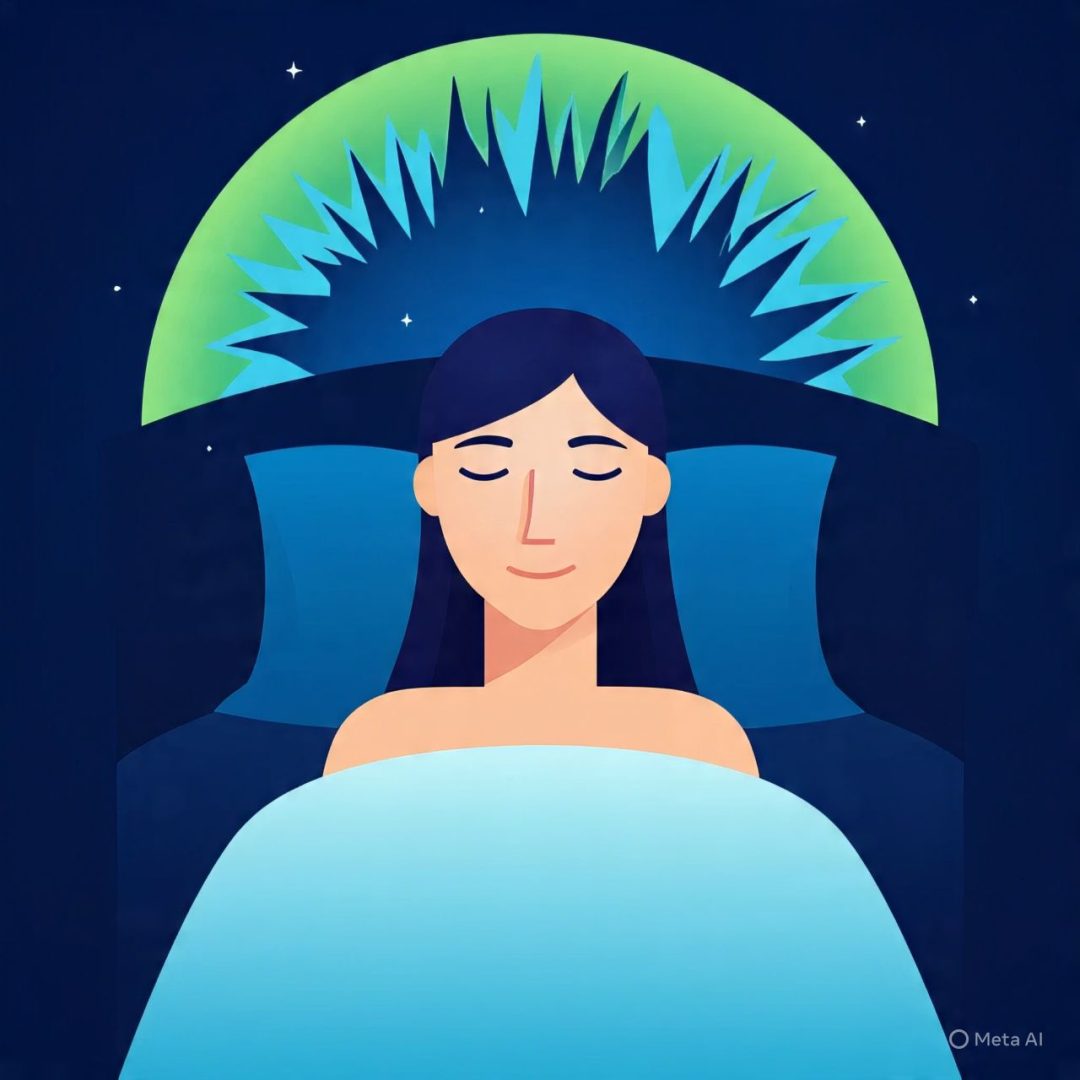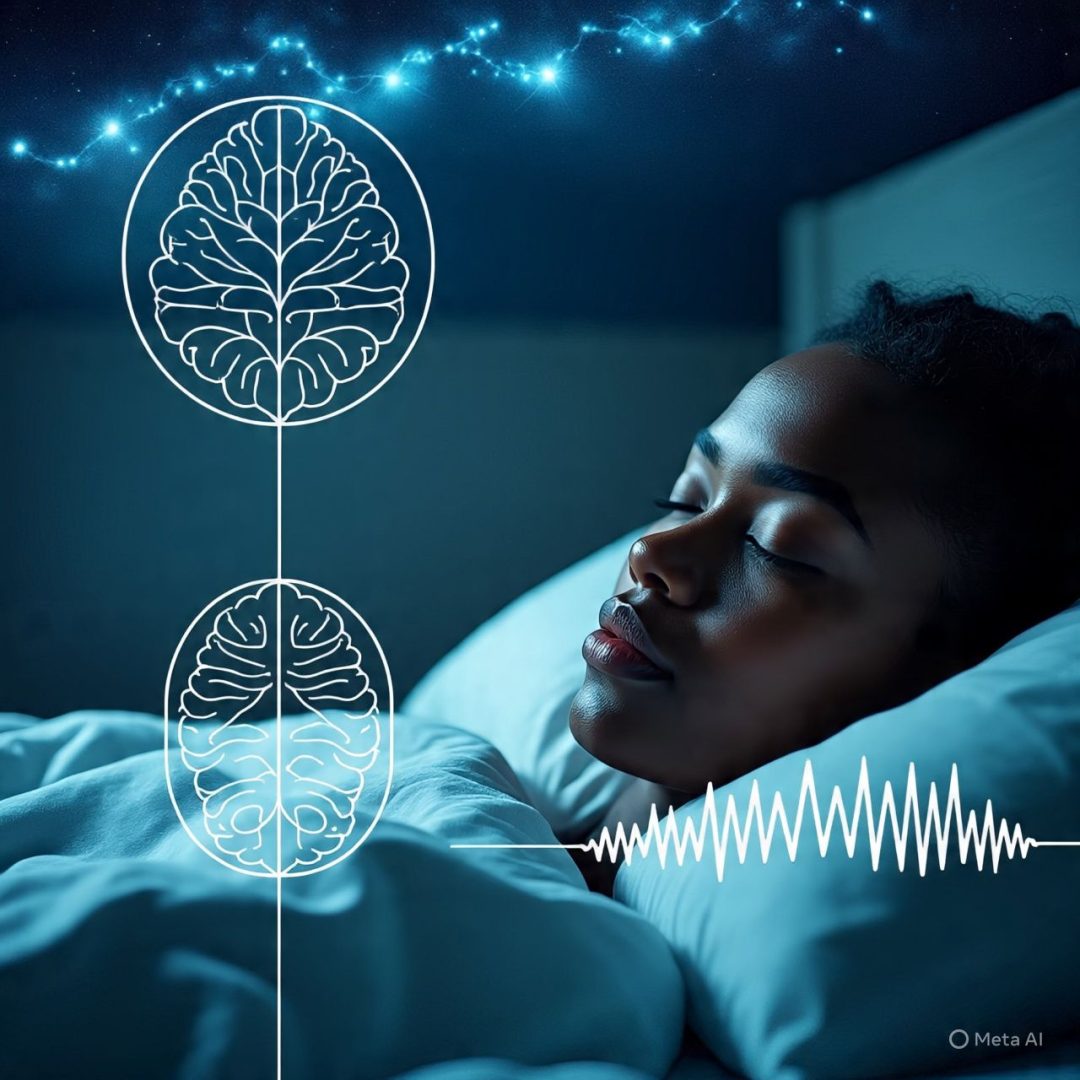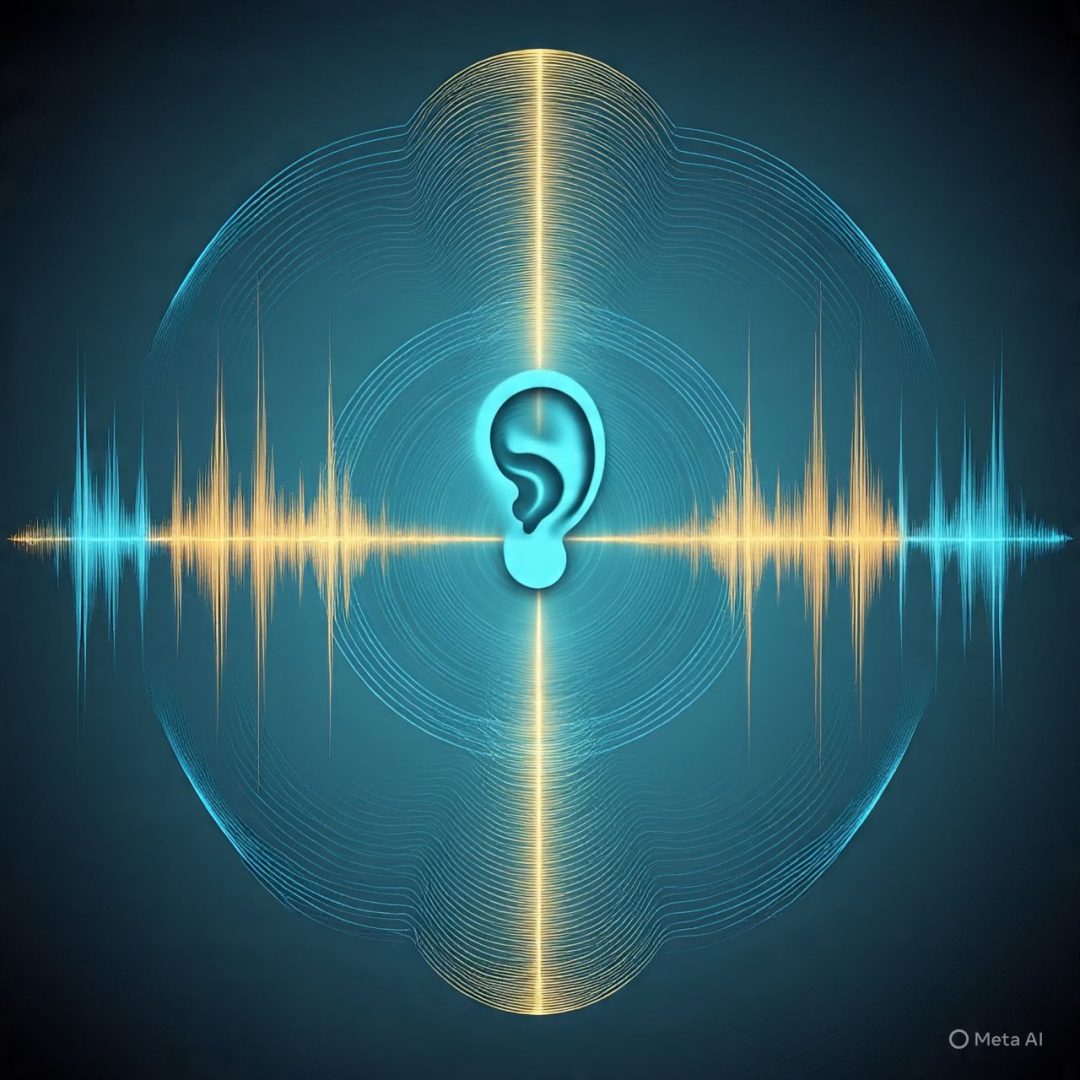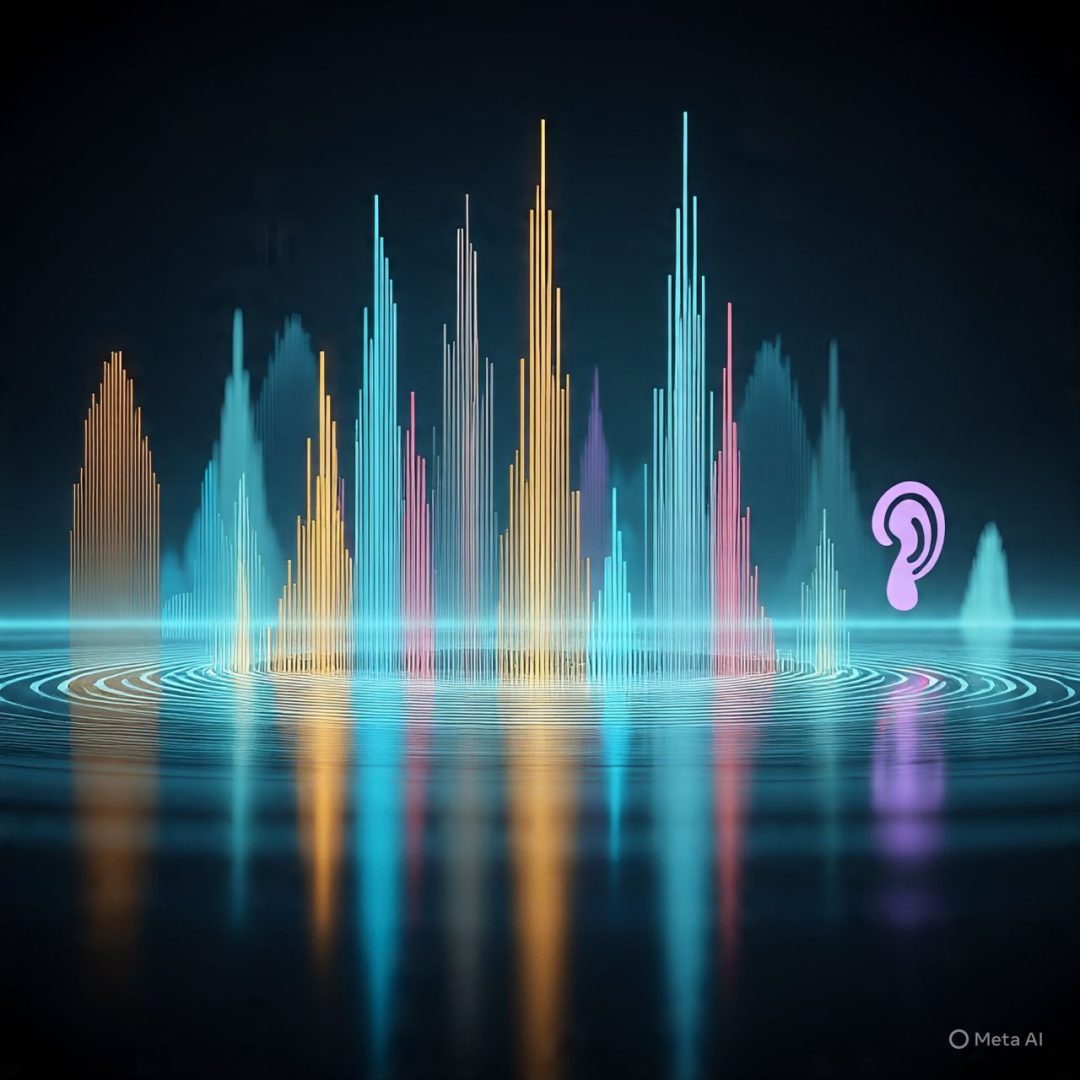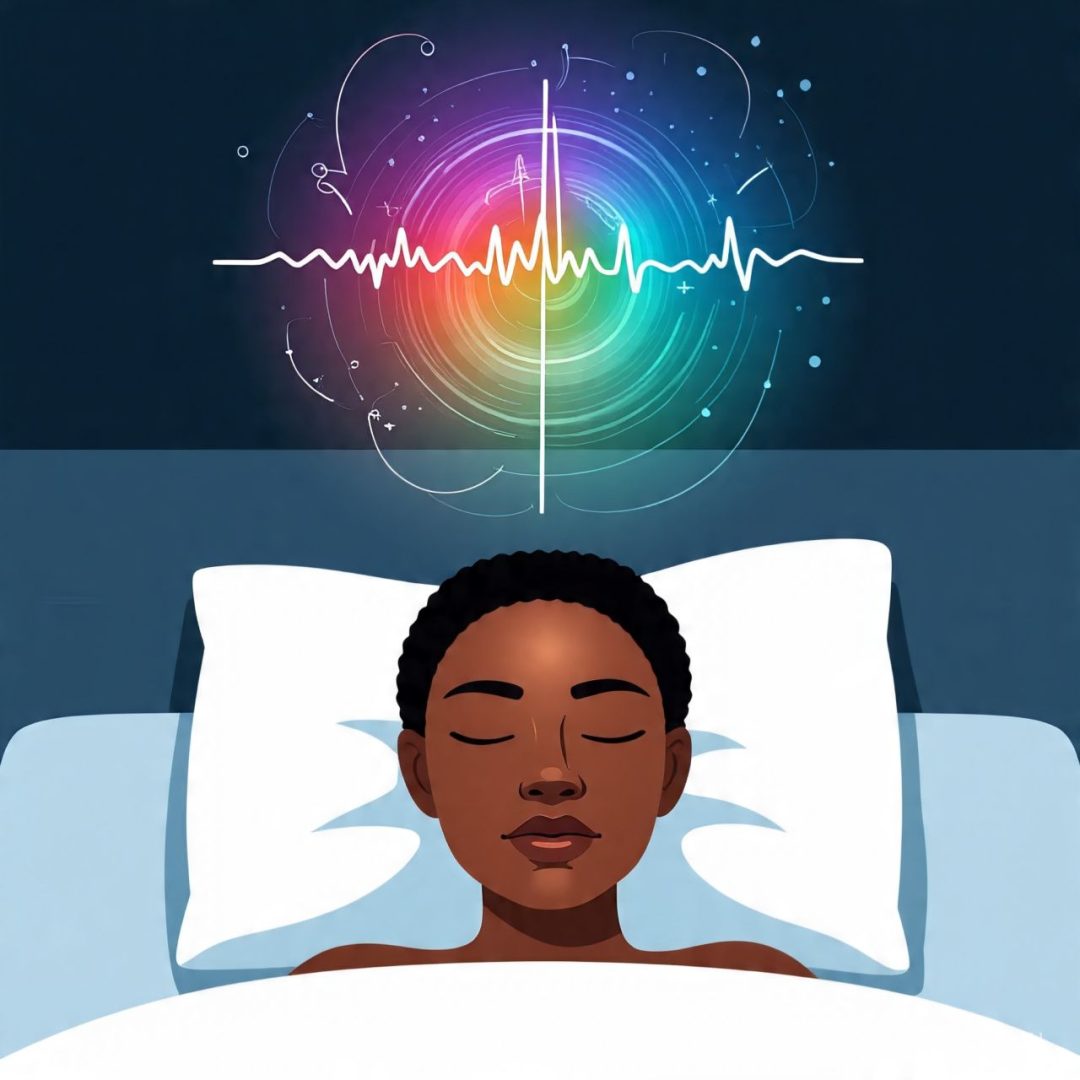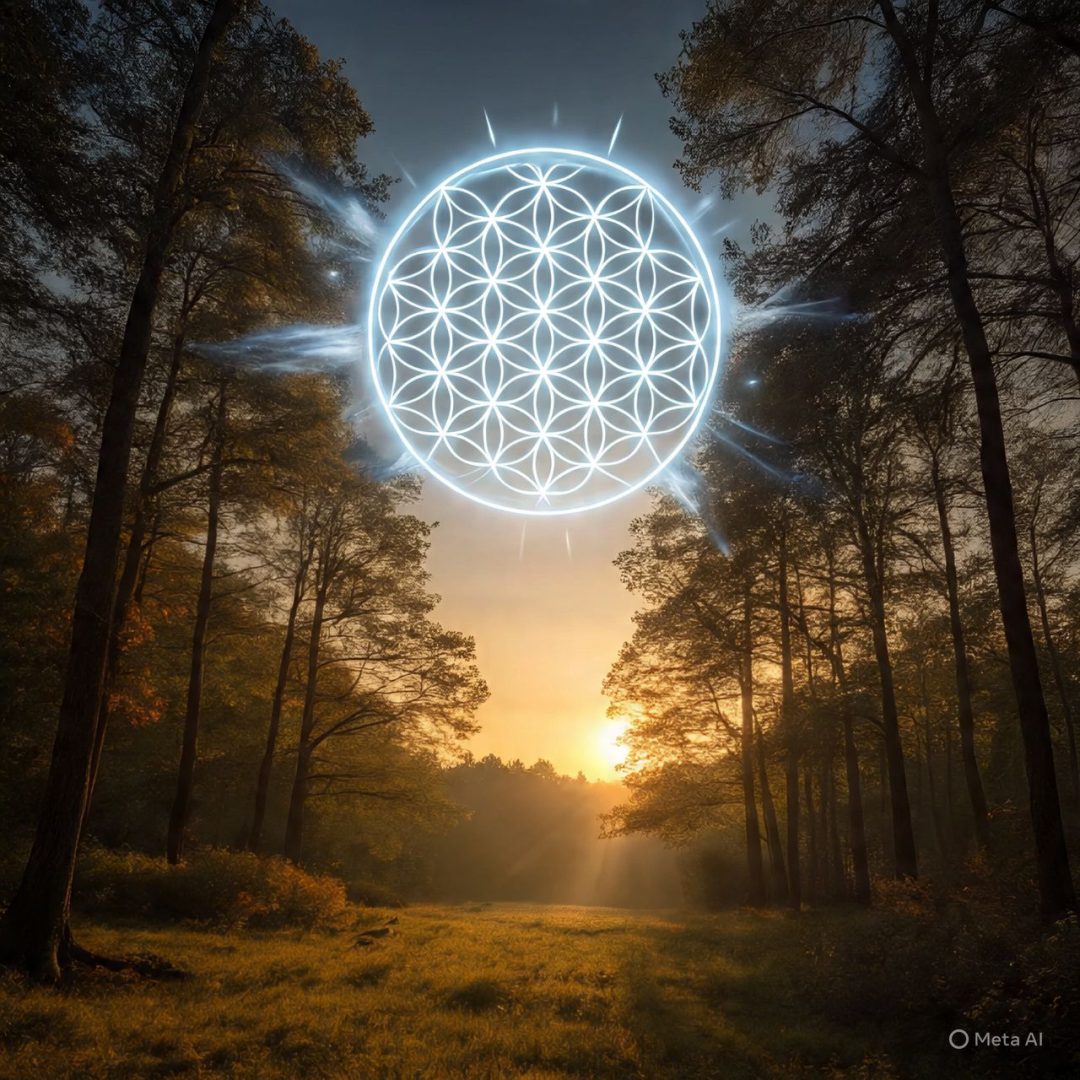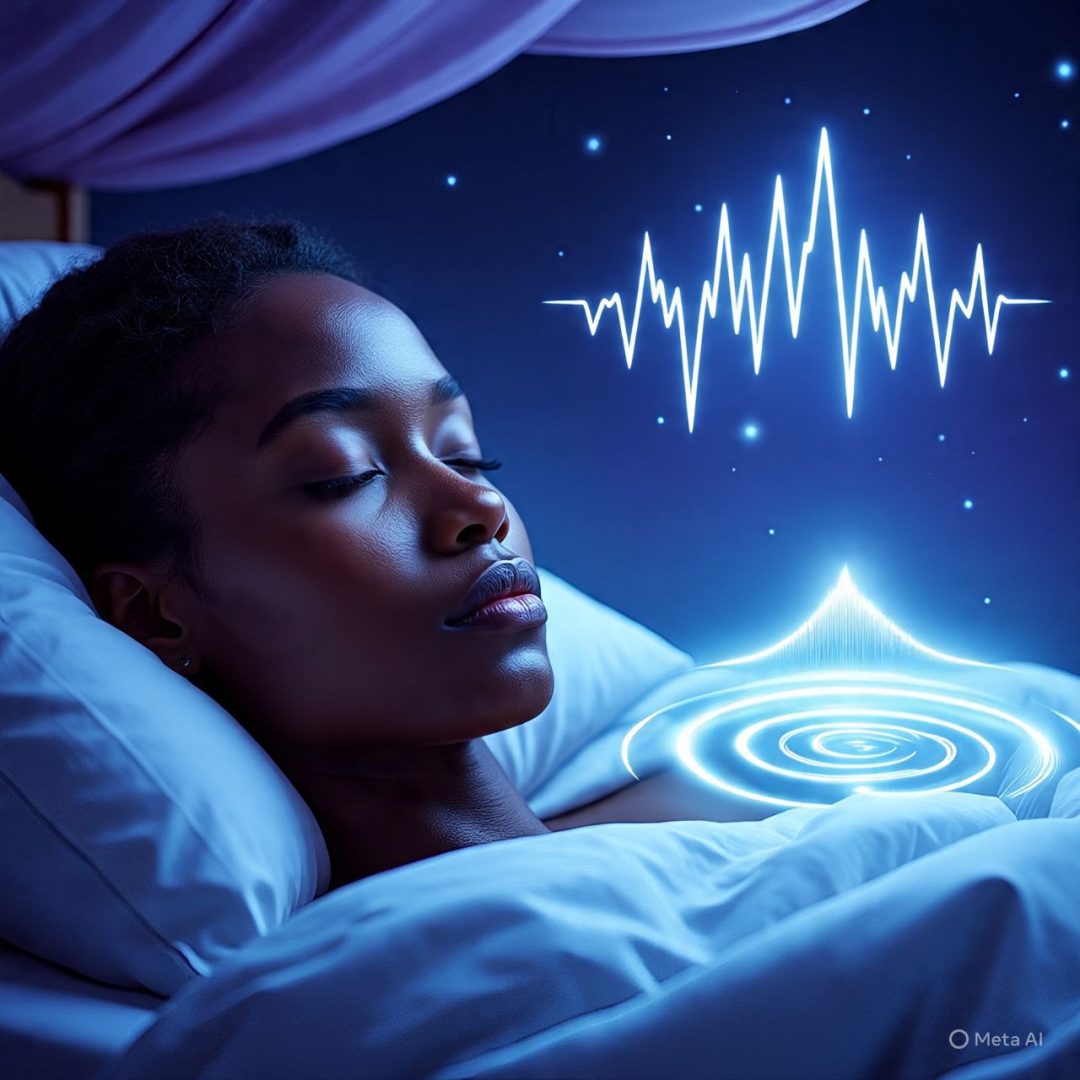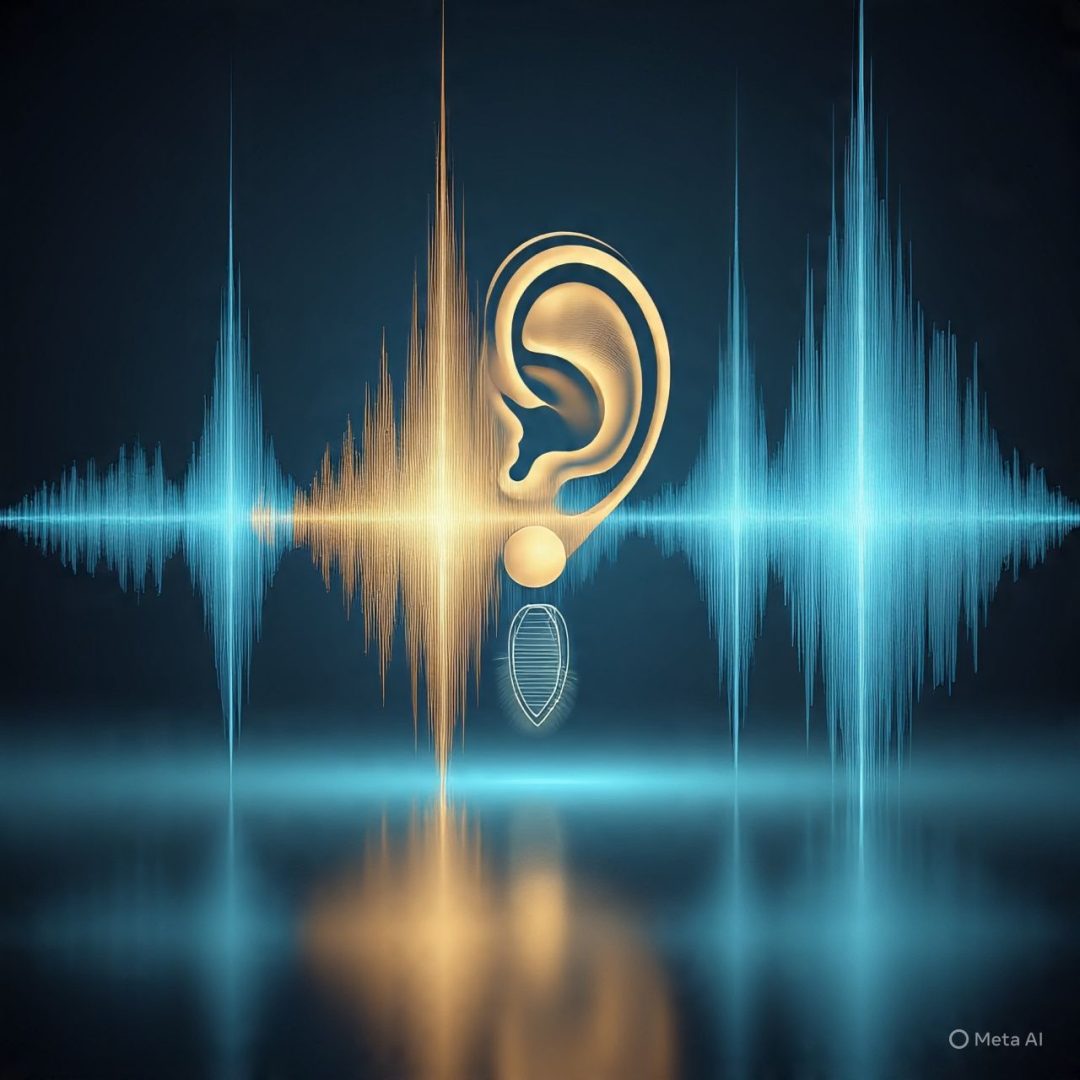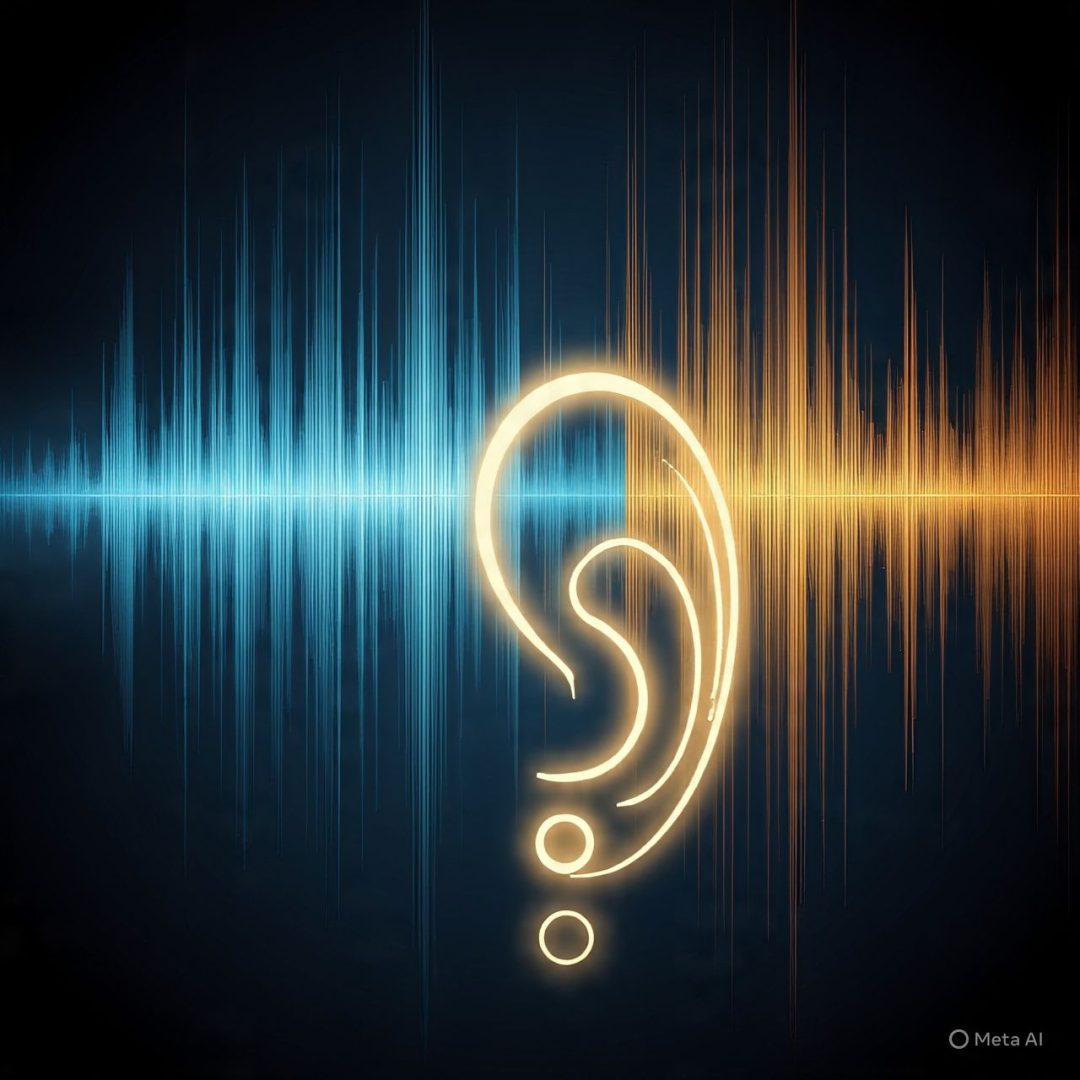Note from Editor: A pragmatist, I tested this myself last night. Wonderful. Slept like a baby. I hope it has similar positive vibes and frequencies for you. Sleep headphones are advised, but if you can manage with ear pods, cool. But for sleep, cans on the ears are really vital as the stereo effects and frequencies used are critical. If used for daytime anything, some content like the white noise could possibly be distracting, but you decide. I hope this final (for now) AudAI™ project brings you the peace and calm we all need.
Let’s dream together. Let’s awaken together.
(.5→6) + 432 – Full Album (12:00:00)
Download (FREE) MP3 (256 kbps – 1.29 GB)
FREE Stream:

A TATANKA AudAI™ Project: Unlock Deep Sleep, Lucid Dreams, and Inner Harmony with Binaural Beats and Nature-Tuned Audio Therapy
“The power of music to integrate and cure… is quite fundamental. It is the profoundest non‑chemical medication.”
— Oliver Sacks, Awakenings
The Healing Sleep Project: Merging Binaural Beats, Ambient Soundscapes, and Natural Frequencies
Crafting a 12-Hour Sound Journey for Deep Sleep, Lucid Dreams, and Inner Restoration
As the world becomes more frenetic and overstimulated, sleep has emerged as one of the most essential yet elusive aspects of wellness. In response, a new 12-hour sound project combines three therapeutic elements—binaural beats, ambient soundscapes, and natural frequency tuning—to offer a sanctuary of calm through audio. This project is not simply a long music track; it is a meticulously designed auditory experience, grounded in science and shaped by ancient wisdom. Each component—whether the rhythmic pulses of binaural beats, the immersive presence of ambient rain and thunder, or the emotionally resonant tuning of 432 Hz—works synergistically to entrain the mind, relax the body, and restore the spirit. The result is a profoundly healing sleep environment that supports the listener across every phase of the night: from sleep onset to deep delta waves and gentle reawakening.
Guided by Rhythm: Binaural Beats for Brainwave Entrainment
Binaural beats are auditory illusions that occur when two slightly different frequencies are played in each ear, creating a third tone in the brain that corresponds to their difference. This effect has been shown to entrain brainwaves, helping listeners shift their mental states in alignment with desired frequencies. In this sleep track, the binaural frequencies guide the brain from relaxed alpha and theta states into deep, slow delta rhythms associated with regenerative sleep. The journey begins around 6 Hz and gradually descends over hours to a stable 0.5 Hz, mimicking the body’s natural sleep cycles. This progression allows the mind to slow down and let go, facilitating everything from relaxation and memory consolidation to vivid dreams and parasympathetic healing.
For effectiveness, these binaural tones are paired with low-frequency carriers (200–250 Hz) and mixed at low volumes (typically around -34 dB) beneath the ambient layers. This ensures they are subtly perceived without becoming intrusive. The track is divided into multiple segments, each with a tailored frequency descent that aligns with phases of sleep, such as the 90-minute ultradian rhythm. Users may not consciously hear the beat, but they often report sensations like soft pulses, yawning, and heavy eyelids—a sign of successful entrainment. Used consistently, binaural beats can become a powerful tool for improving not only sleep but also stress resilience and emotional regulation. When combined with ambient and natural sounds, their effect is magnified into a holistic therapy for the mind.
The track’s binaural framework was carefully composed using audio software such as Audacity, and it features a gradual, seamless transition between frequency zones. This prevents disruption and mirrors the body’s slow descent into unconsciousness. Whether for the seasoned practitioner of meditation or the sleepless newcomer in search of relief, binaural beats offer a science-backed, non-pharmaceutical solution. Their gentle guidance becomes the backbone of this 12-hour journey, inviting listeners to let go of external distractions and enter a space of inner quietude and cellular renewal.
The Sound of Stillness: Ambient Music, Rain, and Thunder
Layered atop the binaural beats are high-resolution ambient soundscapes and field recordings of rain and thunder. These elements serve not only to mask background noise but to emotionally ground the listener in familiar, comforting sounds of the natural world. Rainfall has been shown to promote relaxation by providing a consistent broadband noise that soothes the nervous system. Thunder adds a sense of grounding and depth, while the slow evolution of ambient textures—like distant drones or soft harmonic swells—creates a cinematic and immersive experience. These natural sound cues activate the parasympathetic nervous system, lowering heart rate and easing the transition into sleep.
Unlike synthetic white noise, these natural sound elements are dynamic and alive. Thunder rolls may gently appear in the early hours and fade into lighter rain by the night’s midpoint, subtly mirroring the body’s circadian rhythms. By recording or sourcing authentic environmental sounds from sites like freesound.org, the production captures a realism that manufactured loops often lack. Each element is mixed carefully, between -18 dB and -12 dB, ensuring it is louder than the binaural tones without overwhelming the composition. This attention to balance ensures a rich and textured sound experience that retains spaciousness and avoids listener fatigue across the full 12-hour duration.
Creating an effective ambient sleep track requires more than simply stacking relaxing sounds. It involves deep attention to pacing, spectral density, and harmonic balance. In this project, ambient layers are designed to evolve slowly and imperceptibly—avoiding sharp transitions or melodic content that might jar the subconscious. The rain and thunder function as a kind of emotional and sonic gravity, holding the listener in place while the mind releases into sleep. When paired with binaural beats and natural tuning, the ambiance becomes the emotional soul of the piece—gentle, vast, and deeply reassuring.
The Harmonic Choice: Tuning to 432 Hz
Though less central than the binaural beats or ambient textures, the decision to tune the music to 432 Hz contributes a vital sense of warmth and spiritual resonance to the overall piece. This alternative tuning—just 8 Hz lower than the modern 440 Hz standard—is believed by many to resonate more naturally with the human body and the Earth’s natural frequency (Schumann Resonance). While not universally accepted in mainstream science, 432 Hz has historical and symbolic roots in multiple ancient cultures, from Vedic cosmology to Babylonian myth, where the number 432 held sacred meaning. The auditory difference is subtle, but many listeners describe it as more soothing, organic, or emotionally grounding.
In this project, ambient drones, soft harmonic pads, and tonal washes are all tuned to 432 Hz, allowing them to blend seamlessly into the mix and reinforce the track’s meditative intent. When music aligns with natural harmonics, it can promote a deeper sense of peace and connection—qualities that are essential for vulnerable nighttime listening. Even subtle pitch shifts can influence the body’s tension and the heart’s rhythm, which makes the use of 432 Hz a therapeutic and intentional choice. It is especially effective when paired with the primal comfort of rain and the neurological resonance of binaural beats, creating a trinity of sonic harmony.
While 432 Hz tuning may not be universally necessary, it contributes an added layer of meaning and depth to the project. In our overstimulated digital culture, even small deviations from the standard can feel revolutionary. Tuning to 432 Hz is as much an aesthetic and spiritual decision as it is a technical one—an act of alignment with natural patterns, rather than imposed standards. For listeners open to its subtle influence, the result is a sense of attunement not just with the music, but with the self and the world.
A 12-Hour Sonic Sanctuary for Body and Soul
This 12-hour audio journey is more than a collection of sleep-inducing sounds—it is an integrated system of healing through frequency, rhythm, and nature. At its core are binaural beats, guiding the brain gently into the depths of delta sleep and promoting physiological restoration. Surrounding that framework are the ambient layers—textured with field recordings of thunder and rain—that create a soft, immersive cocoon of peace. Tying it all together is the subtle resonance of 432 Hz tuning, adding warmth and emotional depth to the mix. Together, these three elements form a holistic sleep experience that soothes not only the body but the psyche and soul. As more people turn to sound for wellness, this project offers not just rest, but renewal—a sonic sanctuary for anyone ready to surrender to the night and return whole with the morning light.
Credits
Rain and Thunder SFX
Sound Effect by freesound_community from Pixabay (Free to use/adapt)
Curated Music
2 Hours Deep Sleep Music | LUCID DREAMS | Fall asleep and beat insomnia [432 Hz] https://youtu.be/456OAsudduk
Creator – @krisumusic https://www.youtube.com/@krisumusic
License: Creative Commons Attribution license (reuse allowed)
Why THIS piece of music?
The 432 Hz drones in and out of the left channel, as does a white noise hiss, which additionally complements the mix. The music itself is a spacious, ambient, piano soundscape, made more relaxing with the absence of percussion. Soft harmonics fade in and out and the root note is constant, juxtaposed with its modular, repetitive composition as it ebbs and flows more than follows traditional western structure. Circles instead of lines. A sonic mantra, ideally fitting as one braid of this finely woven lifeline to serenity.
Why is music tuned to 432 Hz considered “healing” music?
🌿 1. Natural Resonance and Harmonics
- 432 Hz is in tune with nature and the universe.
- It is aligned with the vibrations of the Earth, particularly the Schumann Resonance (7.83 Hz), a natural frequency of the Earth’s atmosphere.
- It produces more harmonic overtones and has a smoother sound compared to the modern standard of 440 Hz.
🔢 2. Numerology and Ancient Systems
- 432 is considered a sacred number in various traditions:
- Vedic cosmology: 432,000 years in a Yuga cycle.
- Babylonian, Egyptian, and Norse traditions: Reference 432 in myths and calendars.
- These associations lend symbolic and mystical significance to the tuning.
🎧 3. Listening Experience
- Some musicians and listeners report that 432 Hz music feels more relaxing, open, and meditative.
- Impressions often describe it as:
- “Warmer”
- “More organic”
- “Less aggressive”
- This might be due to minute shifts in pitch, which can affect emotional perception, especially in ambient or classical music.
🎼 4. Contrast with 440 Hz (Modern Standard)
- The modern standard of A = 440 Hz was adopted internationally in the 20th century (ISO 16, 1955).
- Some conspiracy theories claim 440 Hz was promoted for mind control or emotional dissonance, though there’s no solid evidence to support this.
- Still, 432 Hz advocates view 440 Hz as “out of alignment” with nature and the human body.
🧘♂️ Why People Consider 432 Hz Healing
| Reason | Description |
|---|---|
| Harmonic resonance | Said to align with nature, Earth’s frequencies |
| Cultural significance | Found in ancient systems and sacred numbers |
| Personal experience | Often perceived as soothing and more natural |
| Symbolic spirituality | Used in meditative and spiritual music |
| Contrast to 440 Hz | Some view 440 as dissonant or unnatural |
The Binaural Beats Frequencies
🧠 Target Brainwave Journey
| Phase | Duration | Frequency Range | Purpose |
|---|---|---|---|
| Phase 1 | 0–30 min | 6 Hz → 4.5 Hz | Relaxation, meditation |
| Phase 2 | 30–90 min | 4.5 Hz → 1.5 Hz | Sleep onset and deeper calming |
| Phase 3 | 90–480 min | 1.5 Hz → 0.5 Hz (then hold steady) | Deep delta sleep and restoration |
| Phase 4 | 480–480+ min | 0.5 Hz (stable) | Sustained delta throughout the night |
The Specific Binaural Beats Frequencies we developed and used, in the exact sequence, for this project:
6.0 Hz, 5.75 Hz, 5.5 Hz, 5.25 Hz, 5.0 Hz, 4.75 Hz, 4.5 Hz, 4.0 Hz, 3.5 Hz, 3.0 Hz, 2.5 Hz, 2.0 Hz, 1.5 Hz, 1.35 Hz, 1.2 Hz, 1.05 Hz, 0.9 Hz, 0.8 Hz, 0.7 Hz, 0.65 Hz, 0.6 Hz, 0.55 Hz, 0.5 Hz (8:20)
🎧 How Loud Should Binaural Beats Be in a Sleep Mix?
- Target BB Volume: Typically -30 dB to -35 dB relative to the ambient mix is the ideal range for sleep.
- At -30 dB, we are in the sweet spot—especially because:
- We’re using a sine wave tone (which cuts through even at low levels).
- The frequency differential (e.g., 100 Hz left ear, 96 Hz right ear = 4 Hz BB) is clear and consistent.
🧠 Why So Quiet?
- Binaural beats are processed not by the ears directly, but by the brain’s auditory pathways interpreting phase differences between ears.
- As long as both channels present the frequencies clearly and equally, even subliminal levels will result in brainwave entrainment.
- Too loud and it becomes fatiguing, annoying, or may cause subconscious agitation over long durations.
✅ Signs of the Optimal Range
- You can’t hear the beat directly, but it “feels” subtly present—like a quiet pulse inside the mix.
- There’s no conscious rhythmic throb or distraction.
- You still get the intended calming, slowing, or sleep-inducing effect.
✅ Longer Fades Are Better for Long-Form Sleep Audio
Given:
- Each BB tone lasts ~10 minutes (except for .5 Hz which is over 8 hours)
- The listener is in theta or delta states (extremely sensitive to disturbance)
- Our project spans 12 hours
🌙 A longer fade (60 seconds in this case) is preferable to:
- Maintain emotional continuity
- Prevent the subconscious from “noticing” any shifts
- Encourage the brain to effortlessly entrain to each new frequency without agitation or jarring awareness
🎧 Why Long Fades Help
Gradual transitions maintain the coherence of frequency following response (FFR), which is what BBs rely on.
Smoother transition = less cognitive load
The sleeping brain is highly attuned to subtle audio inconsistencies, even below conscious awareness.
Prevents micro-arousals or subconscious defenses
Shorter fades or sudden changes can slightly lift someone from delta into light sleep (or trigger a dream response).
Preserves entrainment
One goal is to avoid any interruption to your sleep. This has been tested and outside my usual awakenings, there was zero dissonance when testing.



